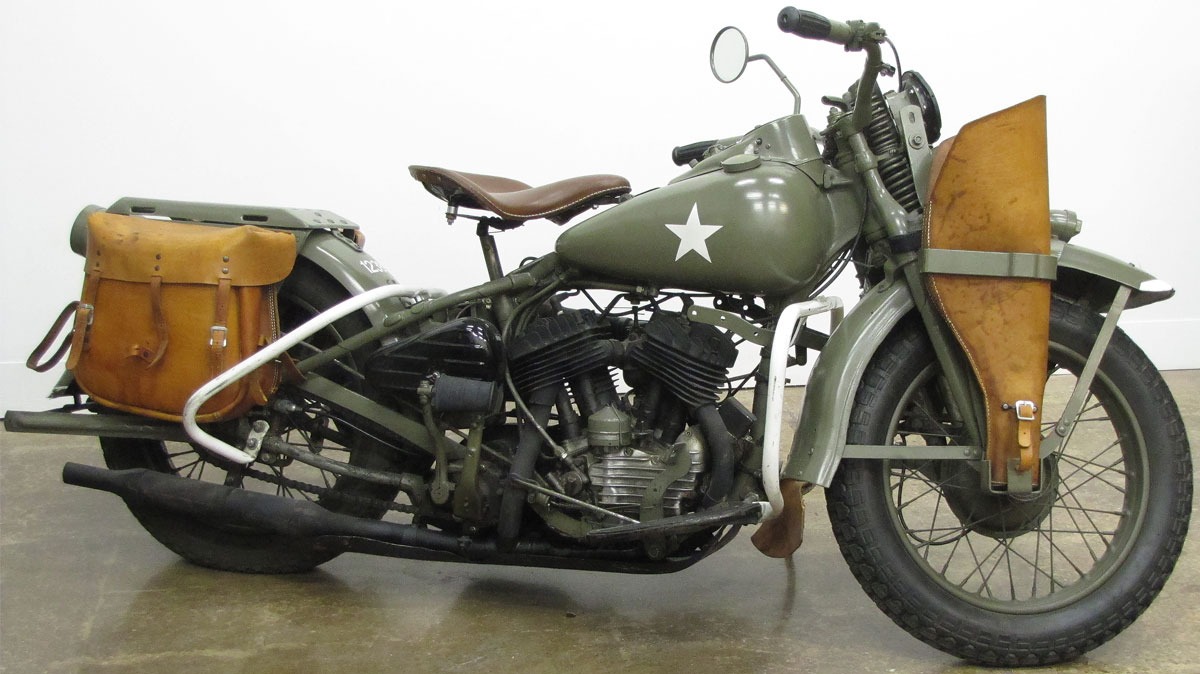
In honor of all American veterans and those men and women currently serving in the U.S. Military around the world, we are featuring the Harley-Davidson WLA now on display at the National Motorcycle Museum among other military motorcycles. Made to United States Army specifications it is sometimes known as “The Liberator” or “The motorcycle that won the War.”
In 1939 the first WLA prototype went from the Harley-Davidson factory to Fort Knox, Kentucky for testing. Harley-Davidson began producing limited numbers of the WLA for the US Army in 1940. Based on the then current WL model, a 45 cu in (738 cc) flat-head, solo-seat v-twin, the suffix “A” means Army. The “W” series had been developed from the “R” series, produced between 1932 and 1936, and “L” signifies high-compression. High compression then meant 5 to 1, of course very low by today’s standards.
Standard equipment on most WLAs includes a windshield with lower apron, leg shields, special black-out lighting, leather saddlebags, skid plate, luggage carrier, safety bars, an ammunition box, a special oil bath air-cleaner and a left side rear view mirror. The supplied tool kits and operator’s manuals are more complete than civilian versions. If needed the machine gun scabbard was added after the motorcycle went into service. The fenders were of several designs, all wider and more open to clear mud. Forks were about 2.5 inches longer than regular production models offering additional ground clearance. Over the years of production many parts of the motorcycle and its accessories evolved in design.
Production of all munitions accelerated once America had entered World War II in 1941 with over 88,000 WLAs built to go into battle before peace was struck. Some 30,000 units were sent to Russia on the Lend-Lease Program. Production re-started for the Korean War in 1949, to finish again in 1952. Most WLAs produced after Pearl Harbor were serial numbered as 1942, no matter what their actual year of production. Thus this bike is dated as 1942, but unlike other Harleys, this does not necessarily mean it was made in 1942 as this “42” prefix was on all WLAs. Motorcycle historian Bruce Palmer has catalogued seven different WLA versions. In parallel, Harley produced the WLC for Canadian forces to a slightly different specification. Not all WLAs were put into use and for many years after the War were sold as government surplus as were their replacement parts.
Harley’s 45-inch flat-head v-twin was nothing if not reliable. And it could easily run on 74-octane fuel, hence its suitability for war zone police, escort, courier and radio duties. In spite of some being equipped with a Thompson machine gun scabbard, very seldom if ever was the WLA ever used as a fighting machine. Motorcycles in time of war have been primarily used for courier service.
Few WLAs remain in original shape, though some are being carefully restored. Many were bought by returning GIs and “civilianized”, some even fuelling the growing bobber and chopper cult.
Specifications:
- Engine: 45 Degree, V-Twin
- Type: Air-Cooled, Side-Valve
- Compression Ratio: 5:1
- Bore & Stroke: 2.745 x 3.8125
- Displacement: 739cc, 45.12 Cubic Inches
- Carburetion: Linkert
- Ignition: Battery, Coil & Points
- Horsepower: 23.5, Rated
- Primary: Chain
- Transmission: 3-Speed
- Final Drive: Chain
- Frame: Steel, Single Down Tube
- Suspension: Leading Link “Springer” Fork, Rigid Rear, Sprung Seat
- Brakes: Drum, Front & Rear
- Wheelbase: 57.5 Inches
- Dry Weight: 576 Pounds
- Top Speed: 65 MPH
Leave a Reply
Want to join the discussion?Feel free to contribute!

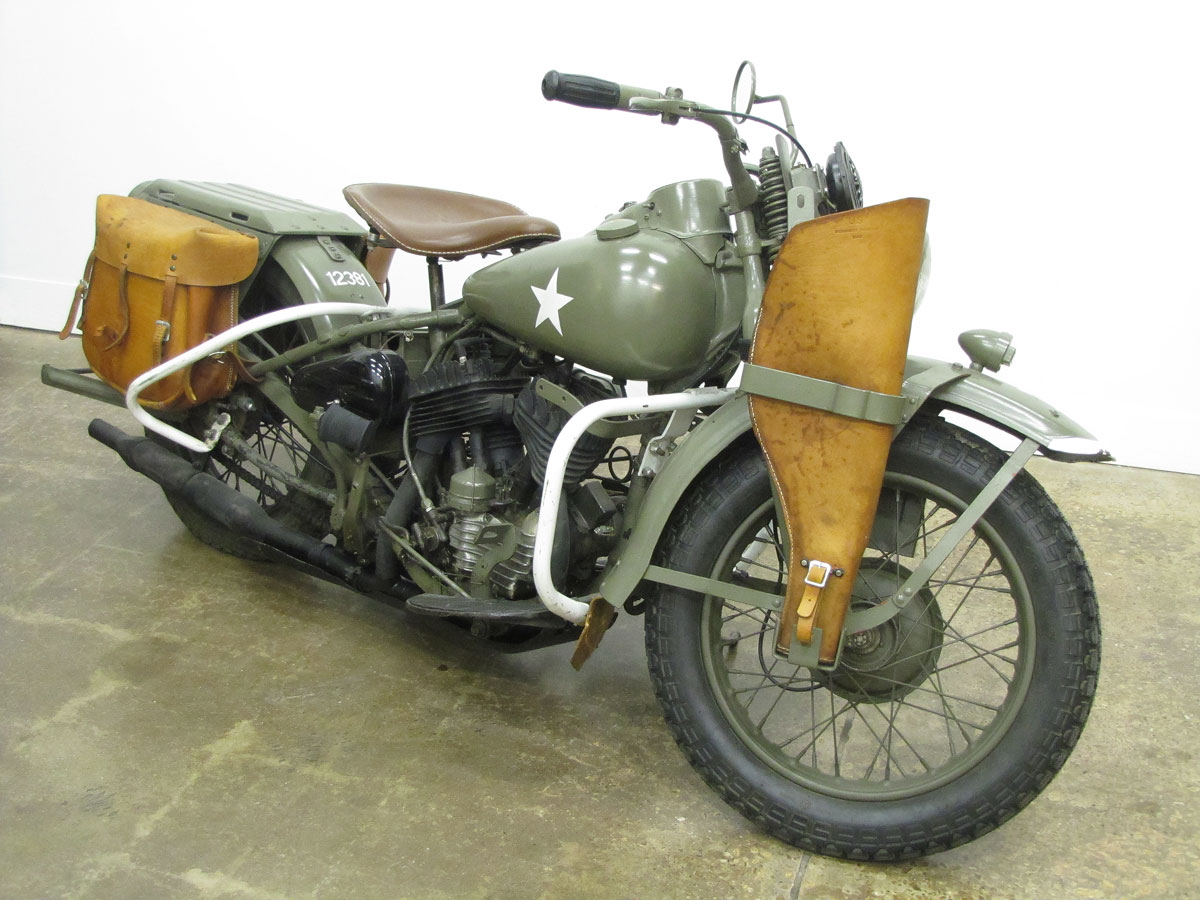
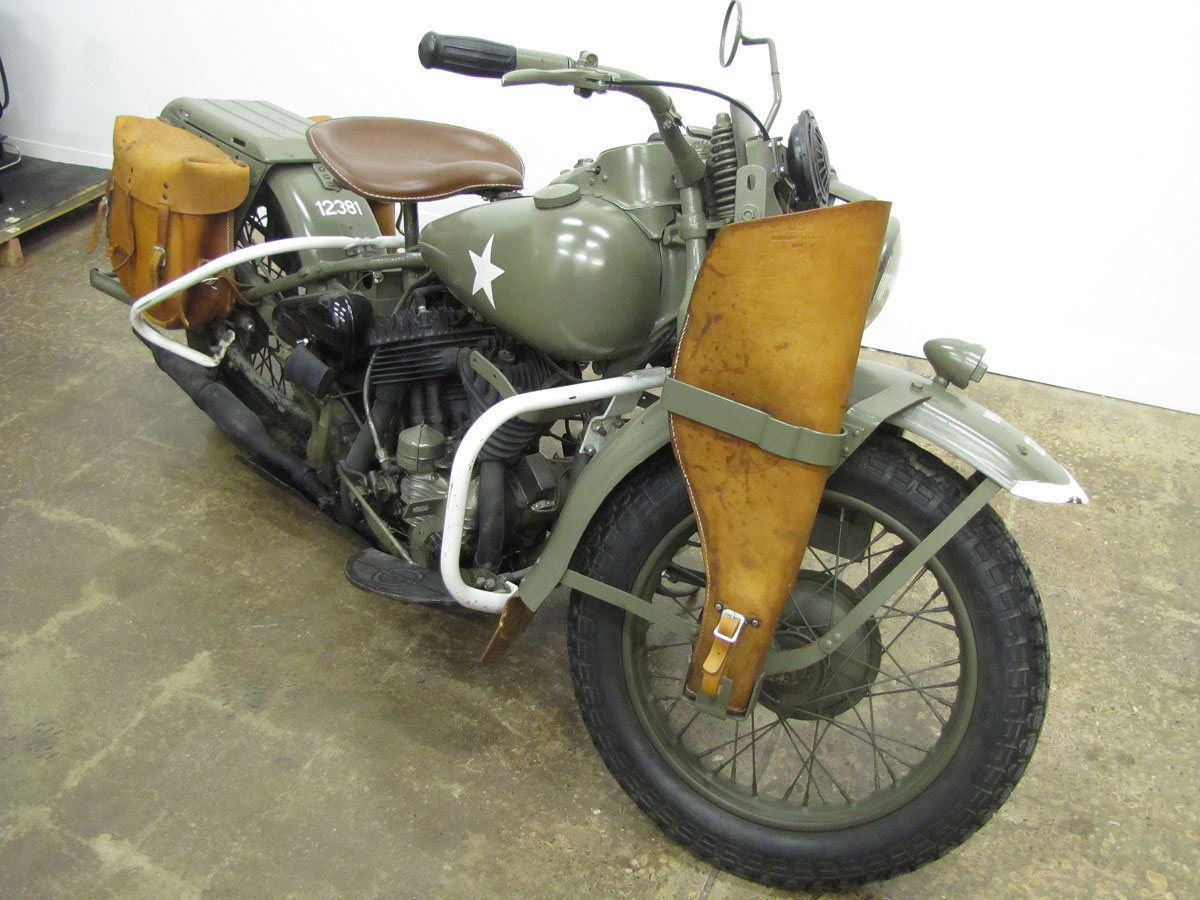
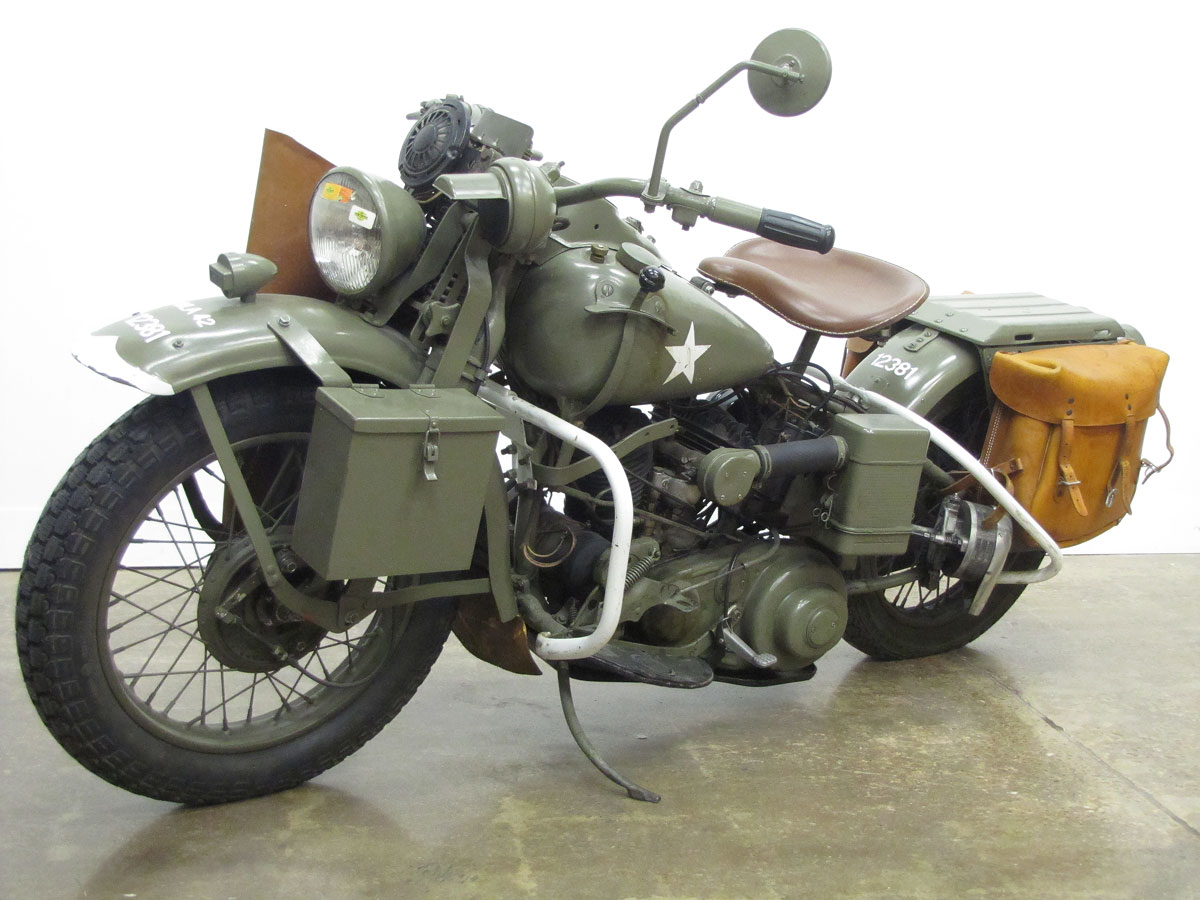
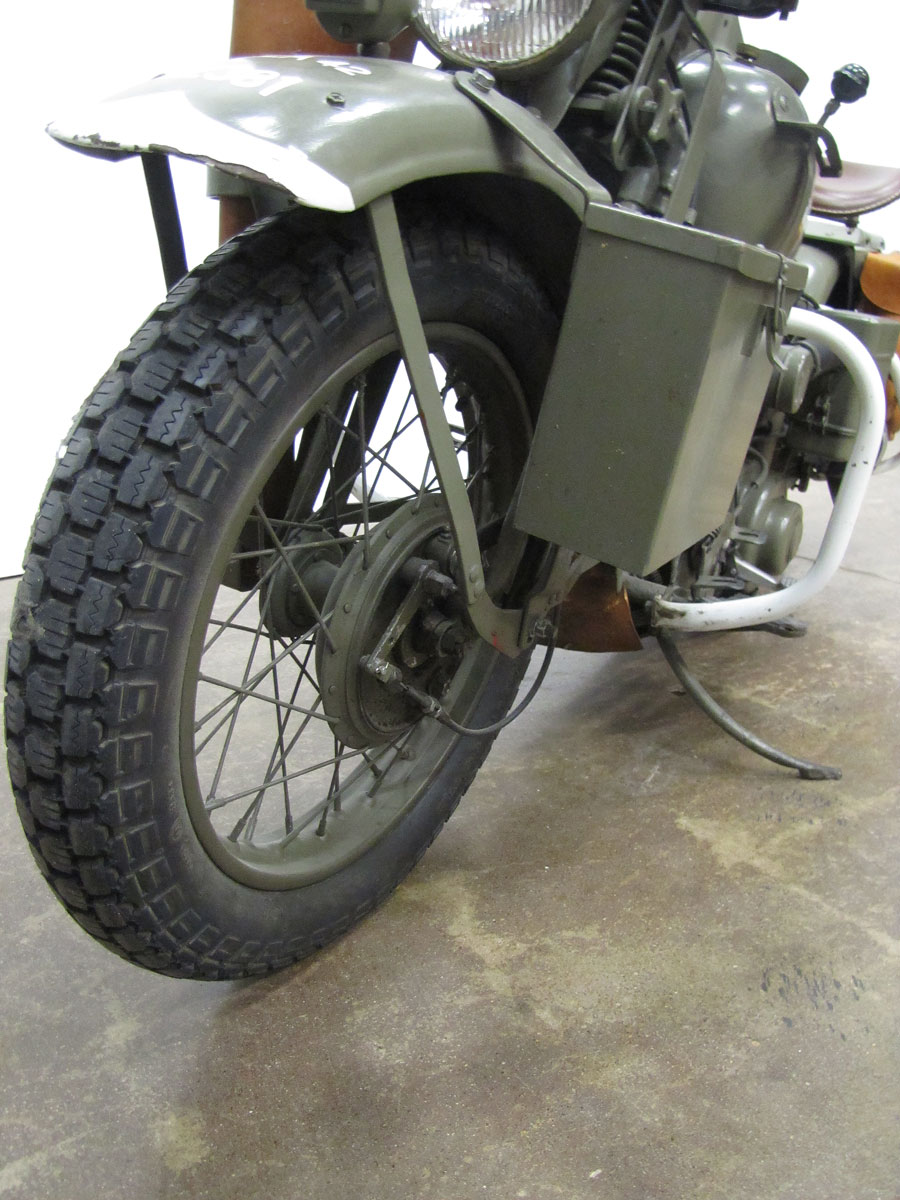
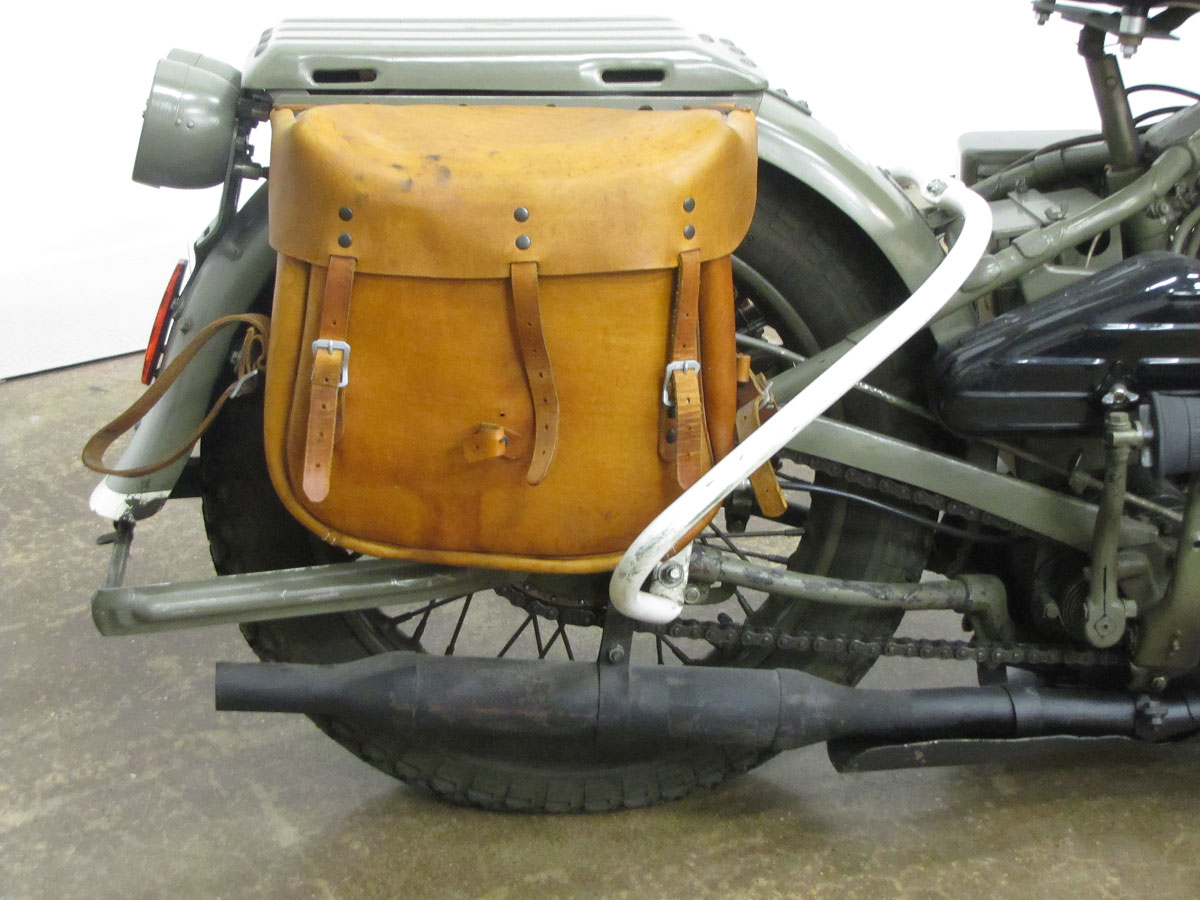
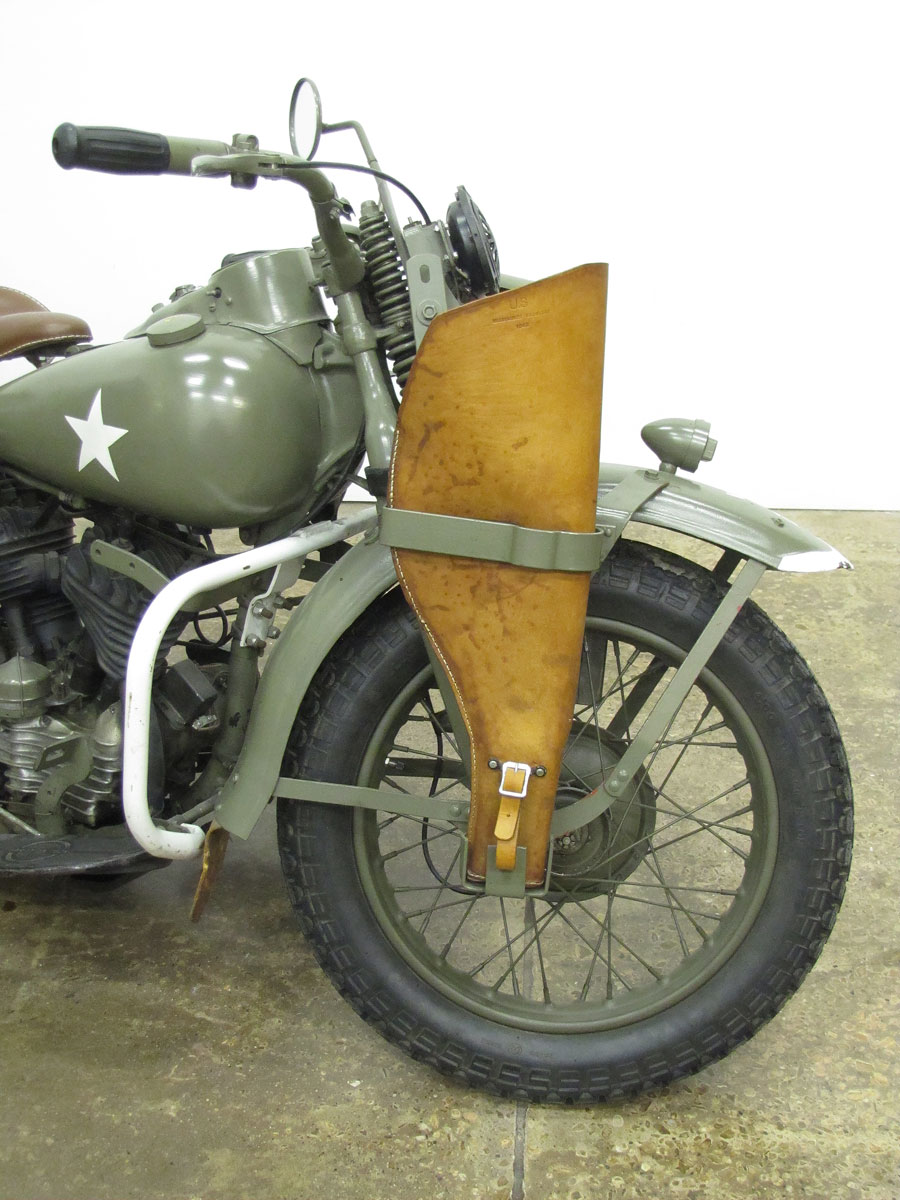
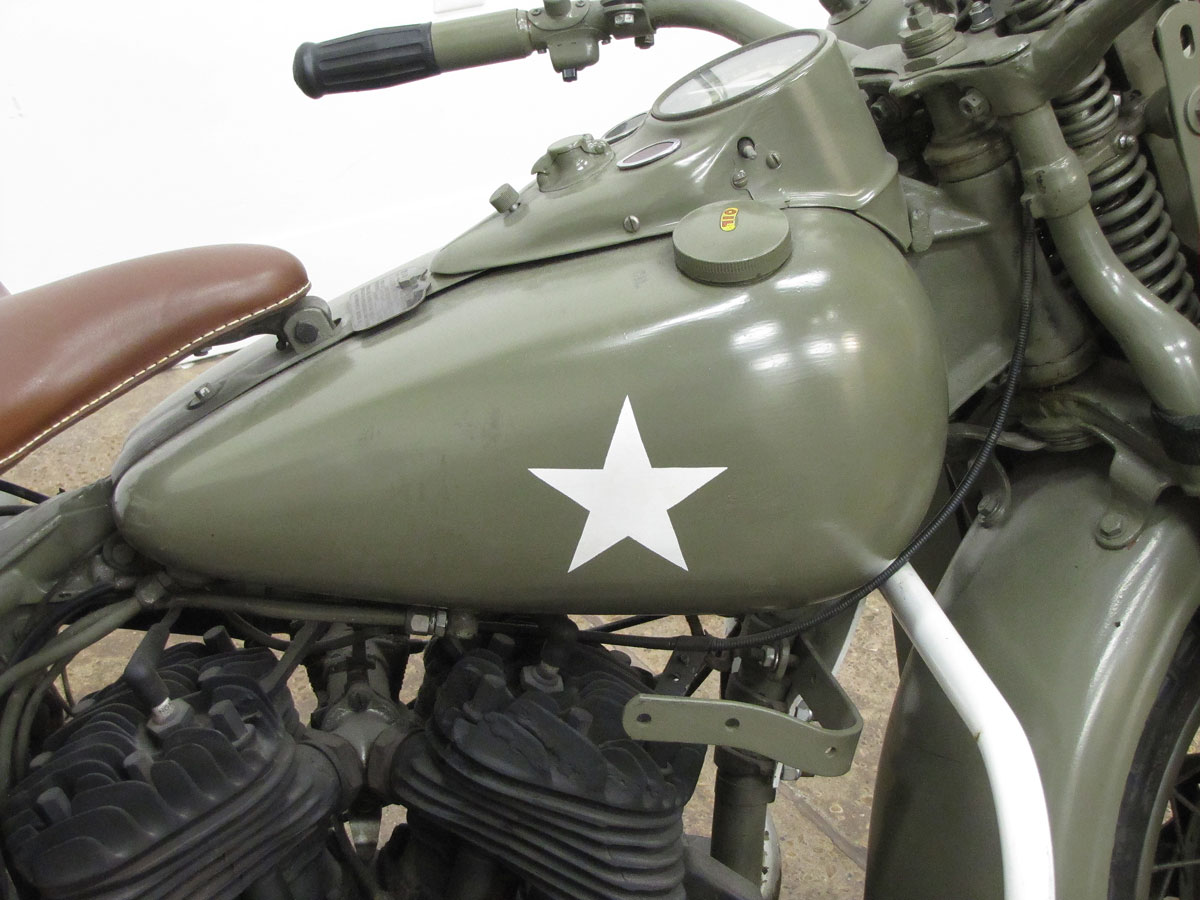
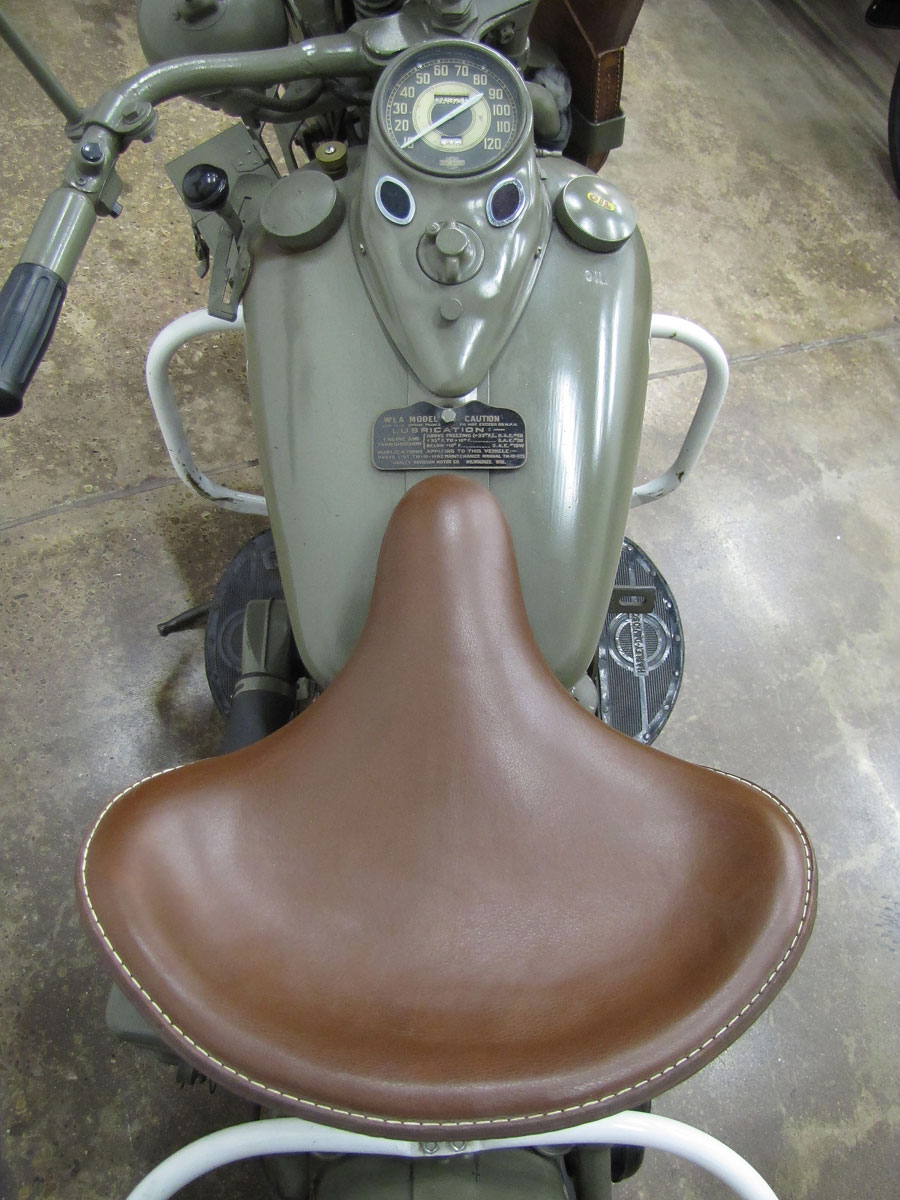
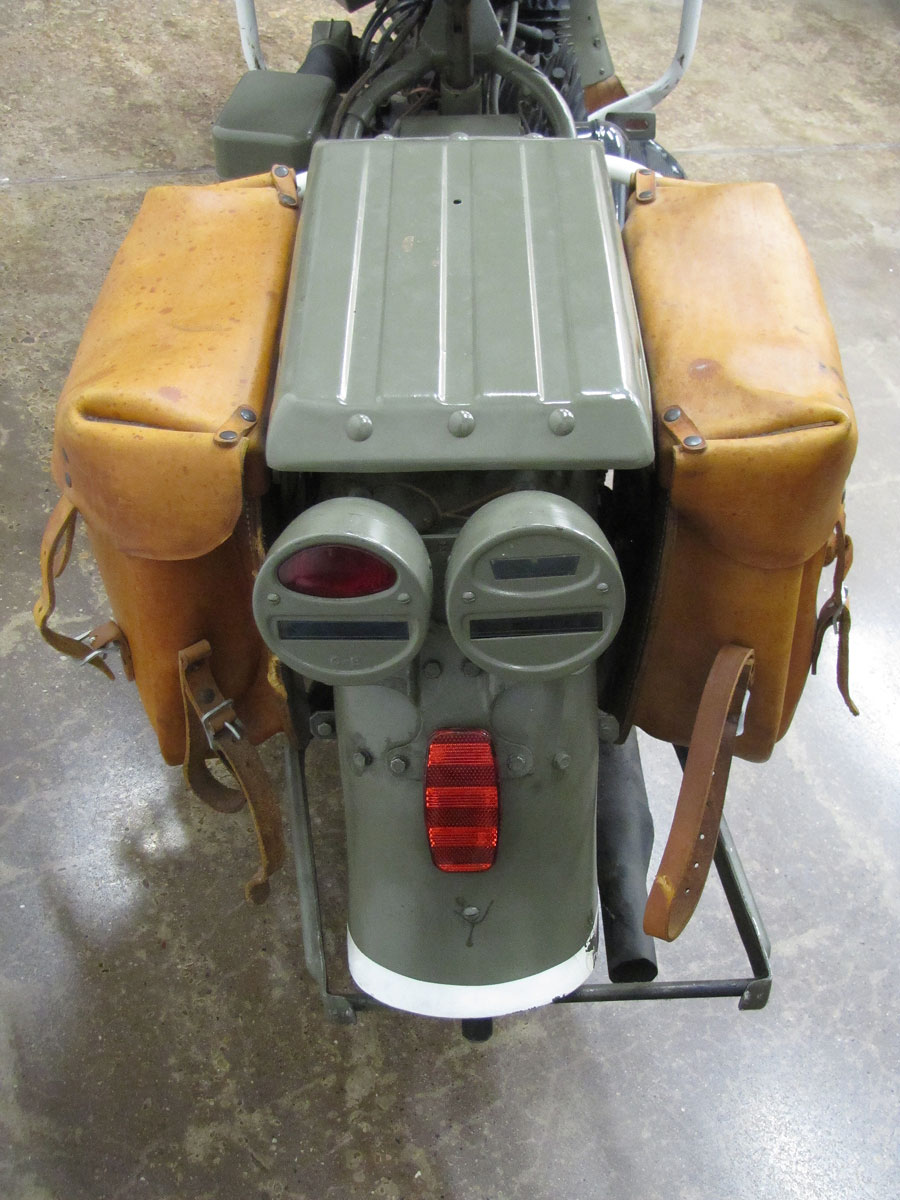
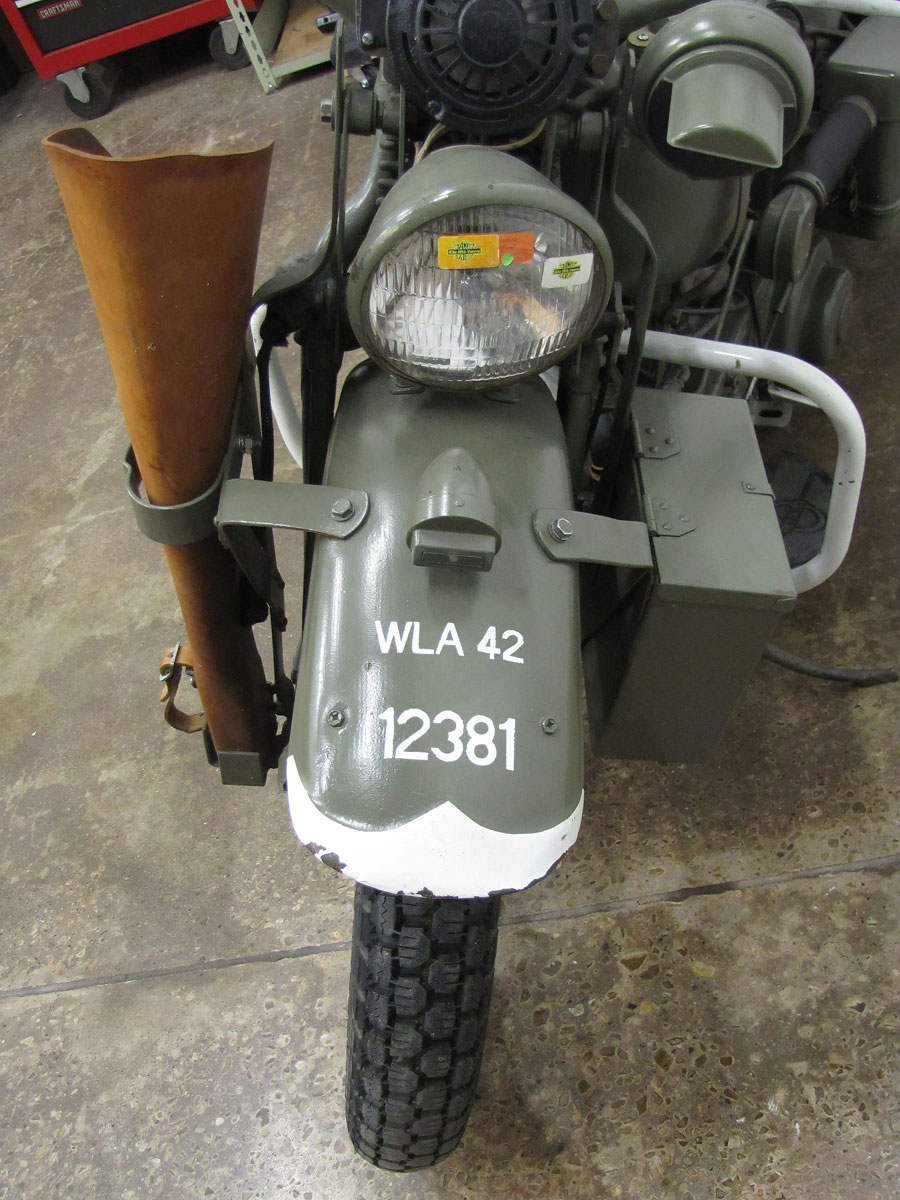
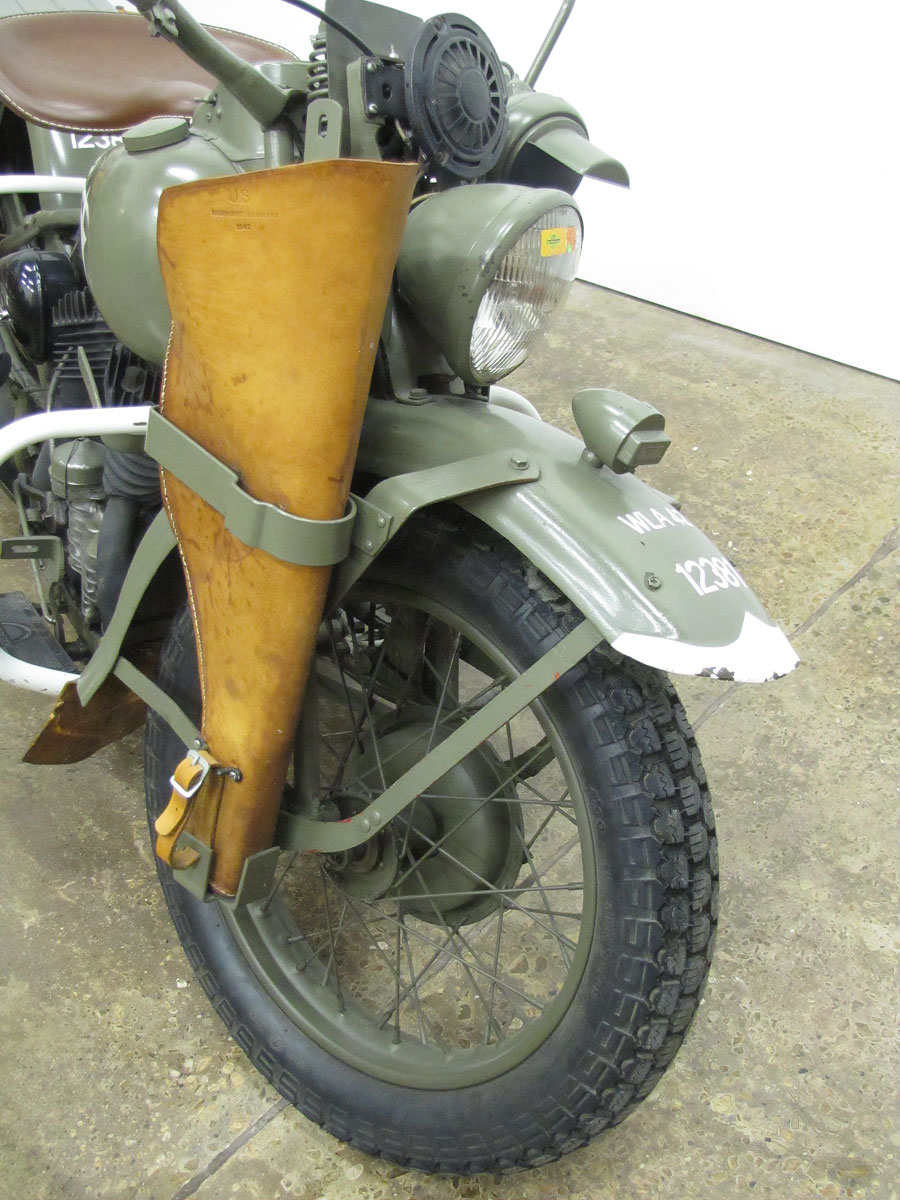
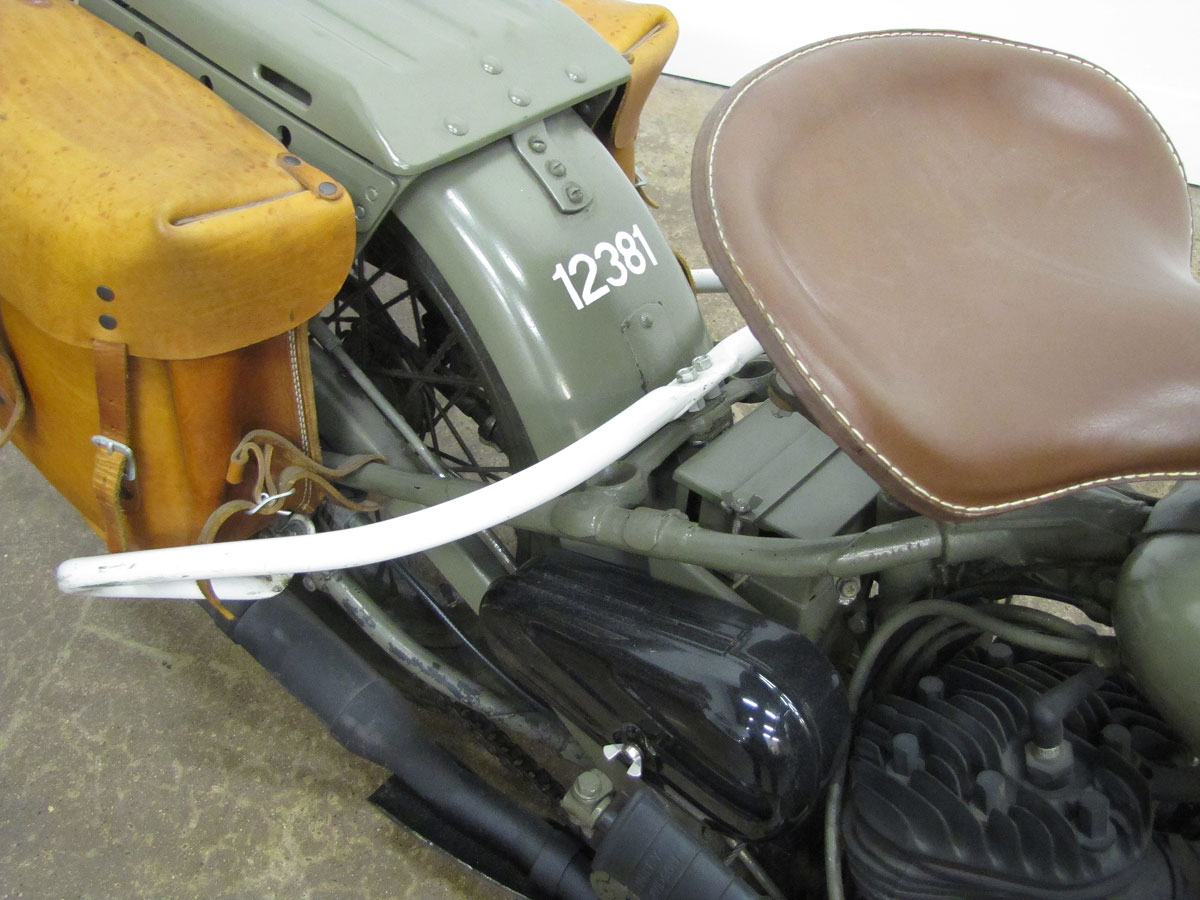
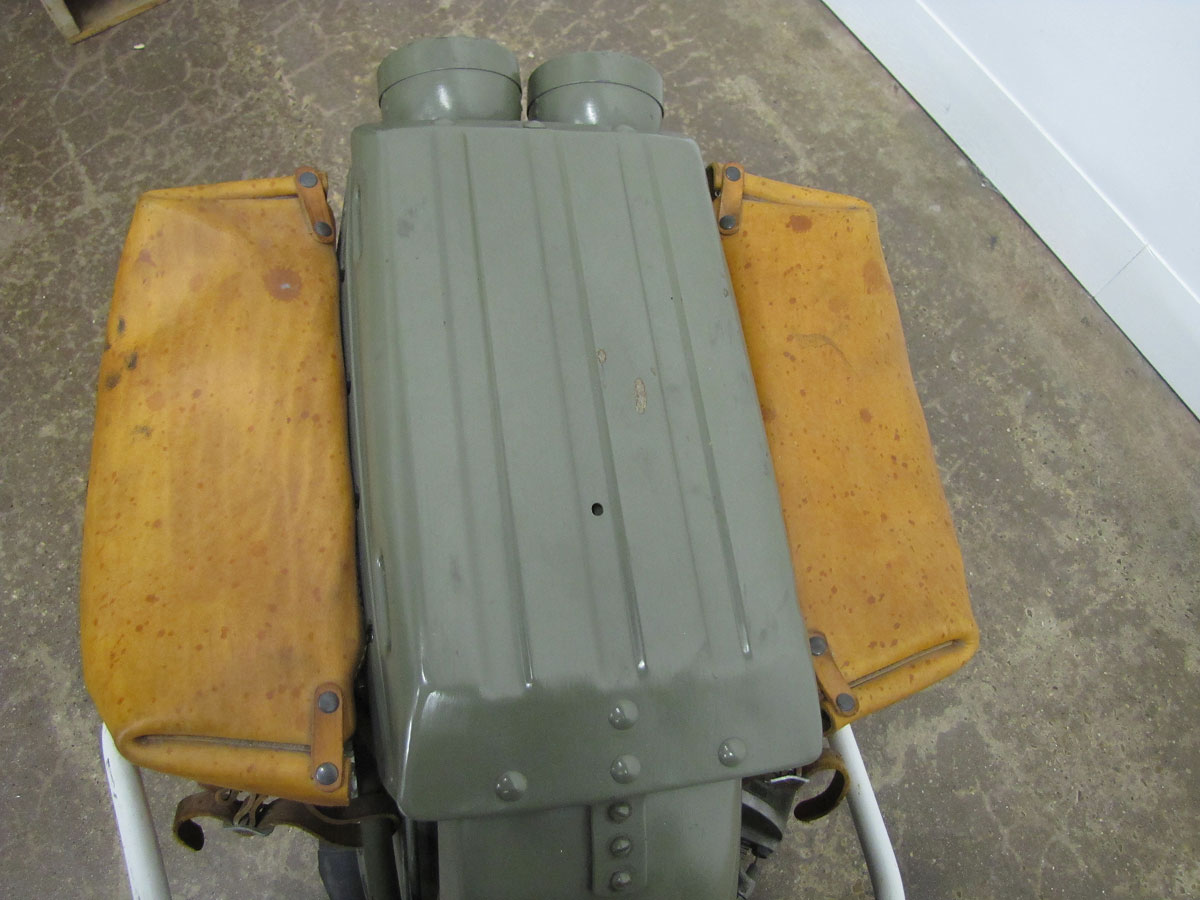
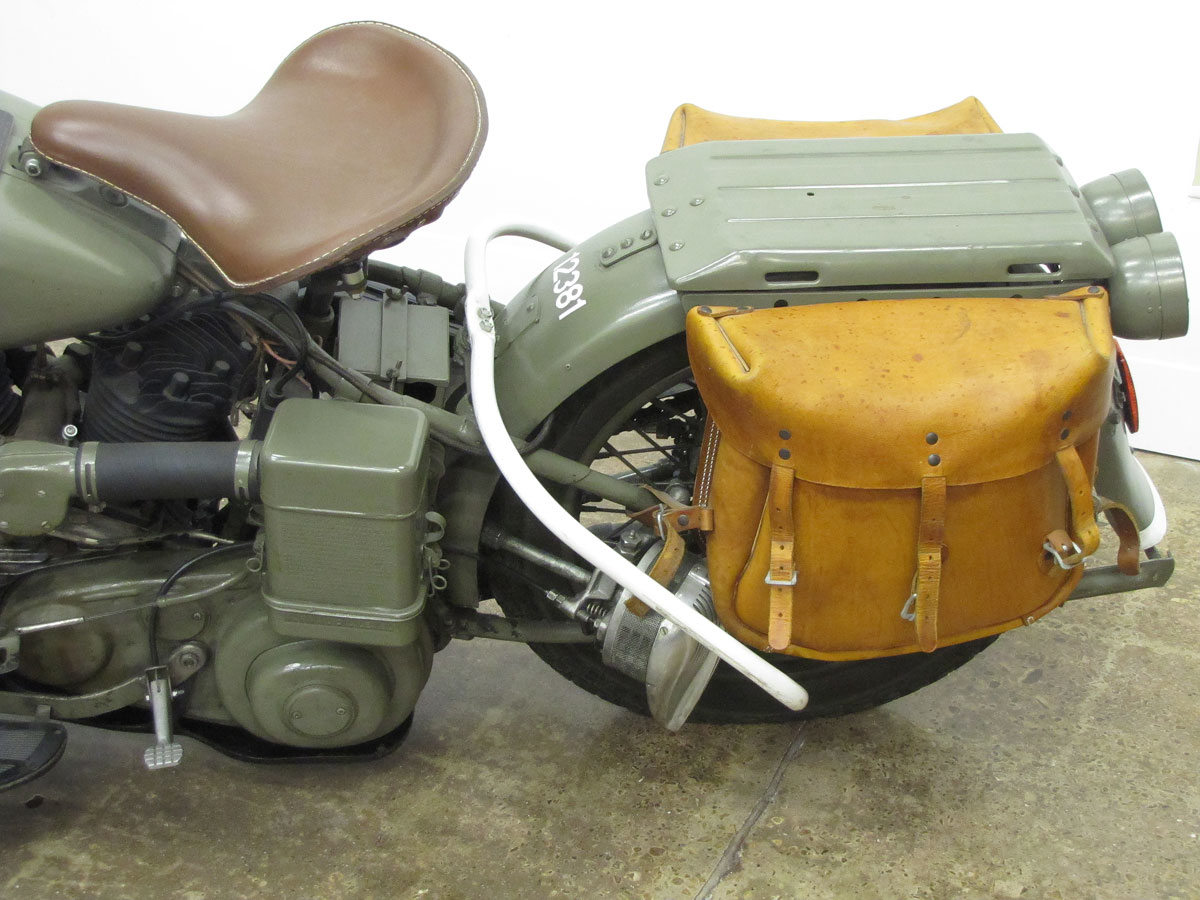
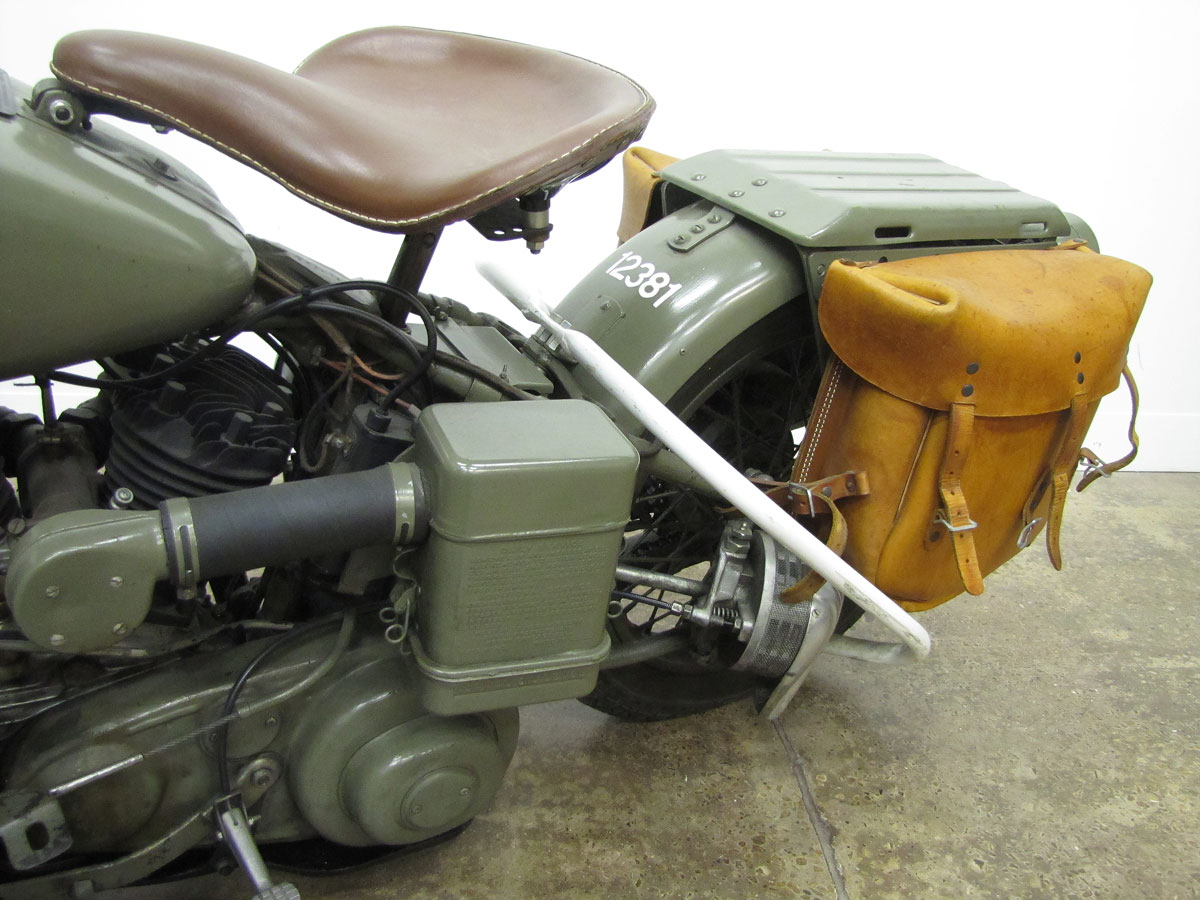
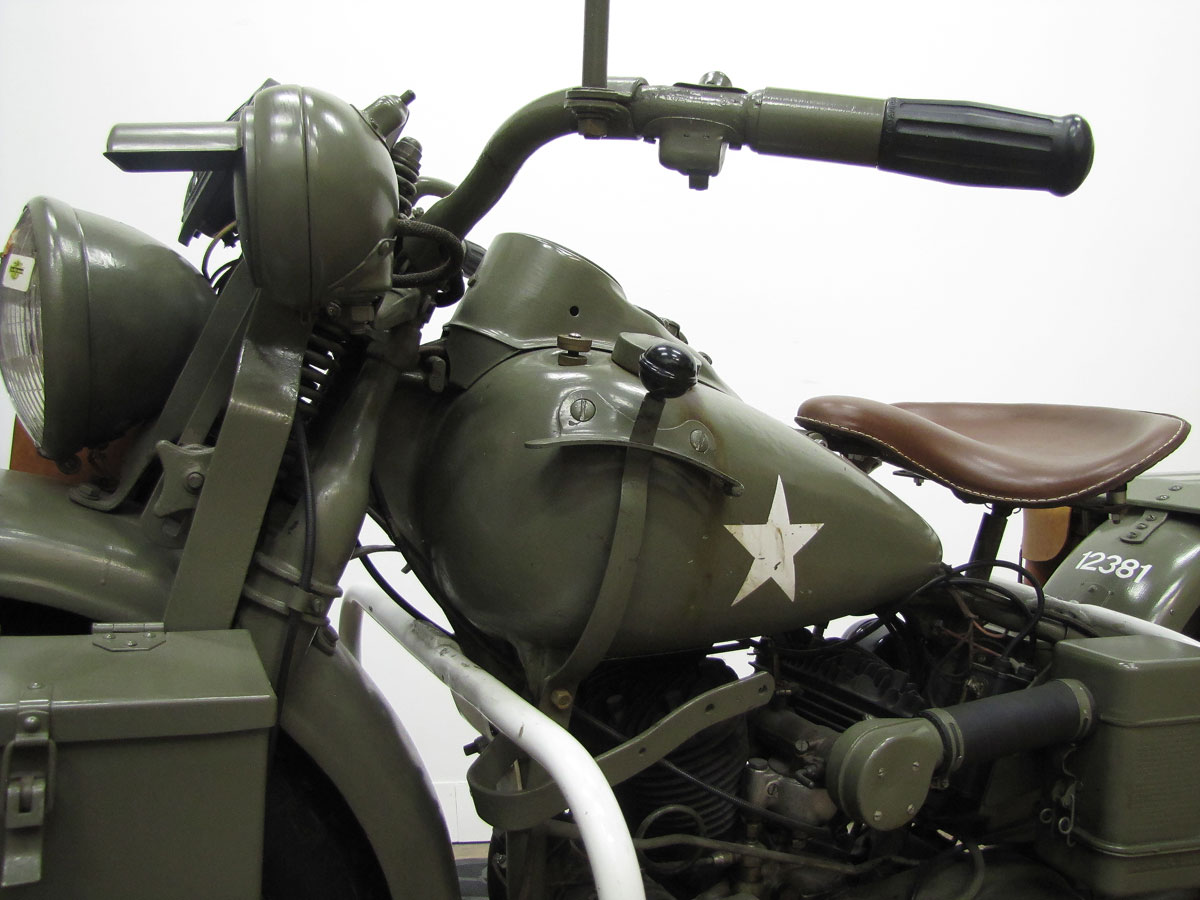
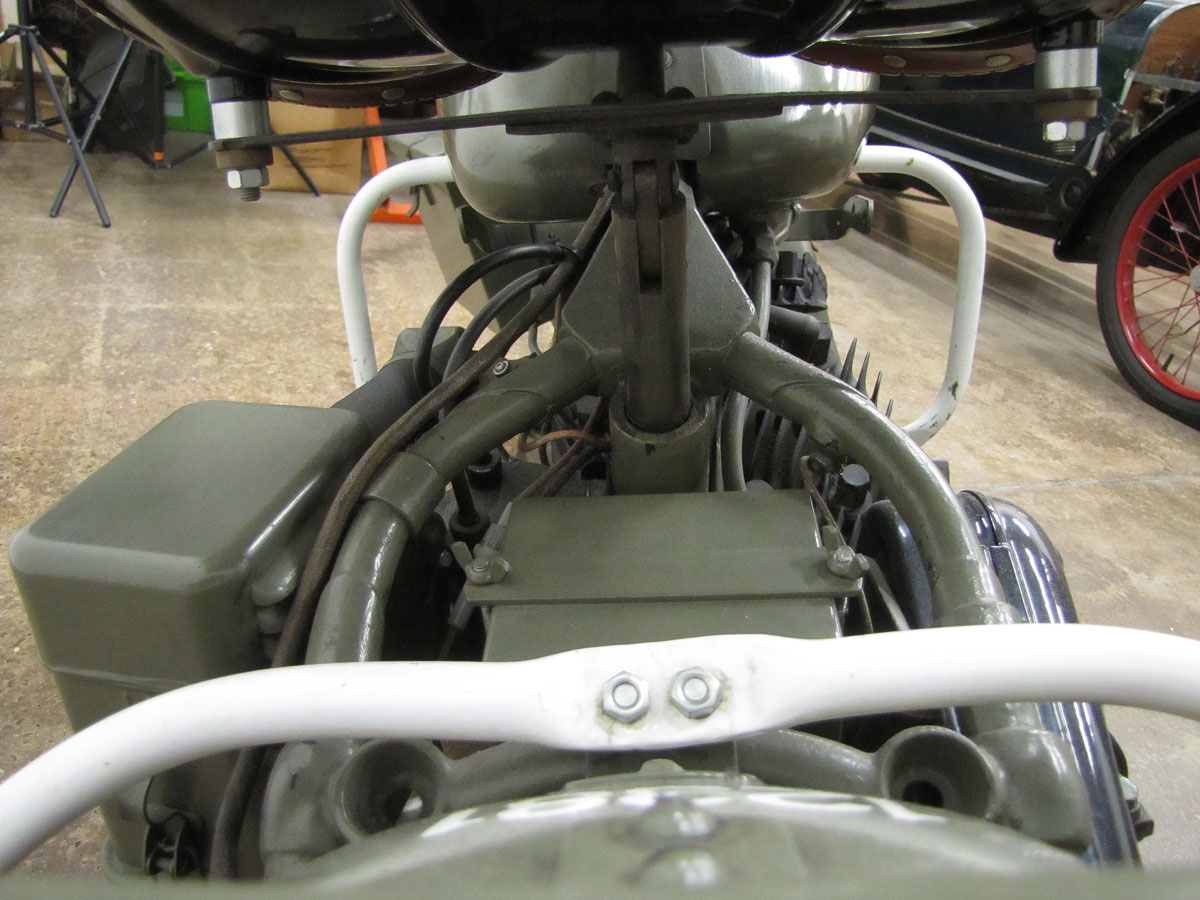
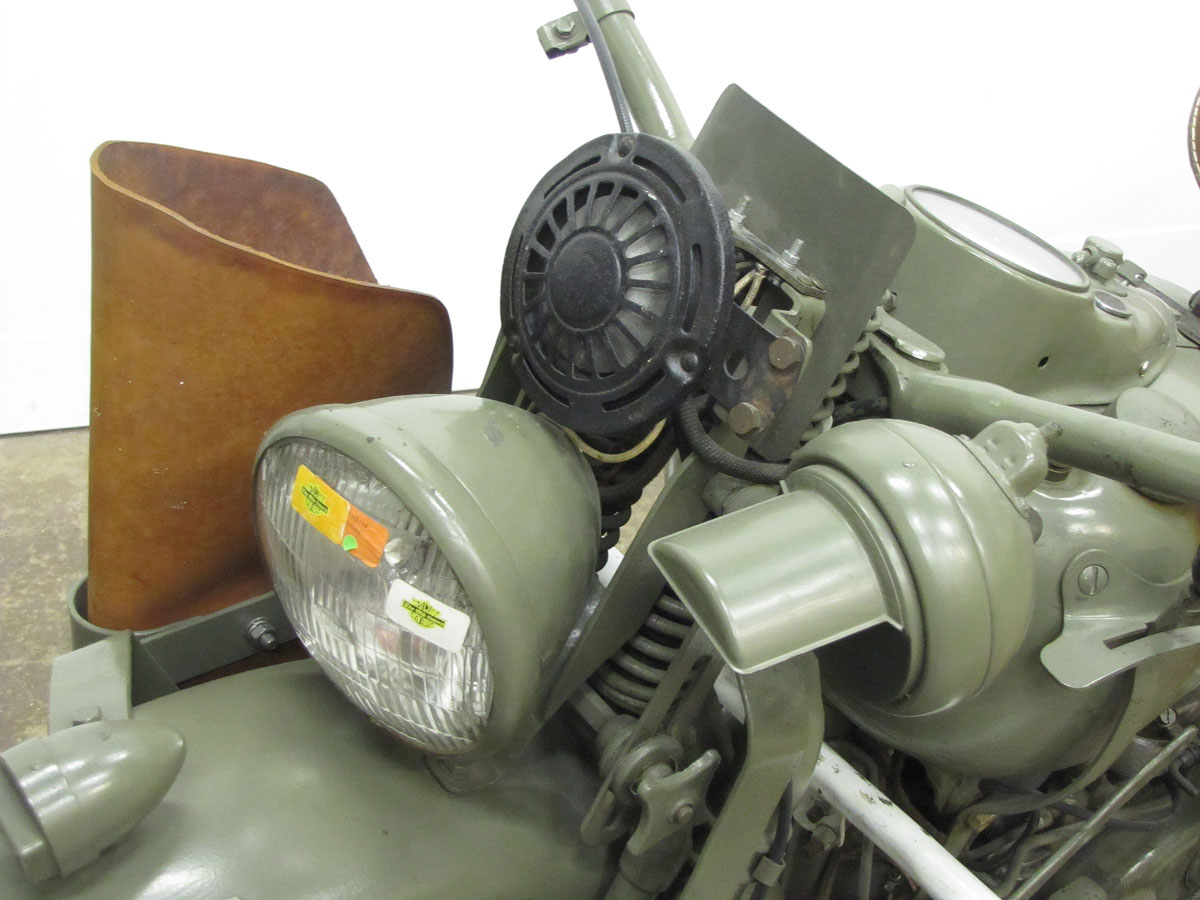
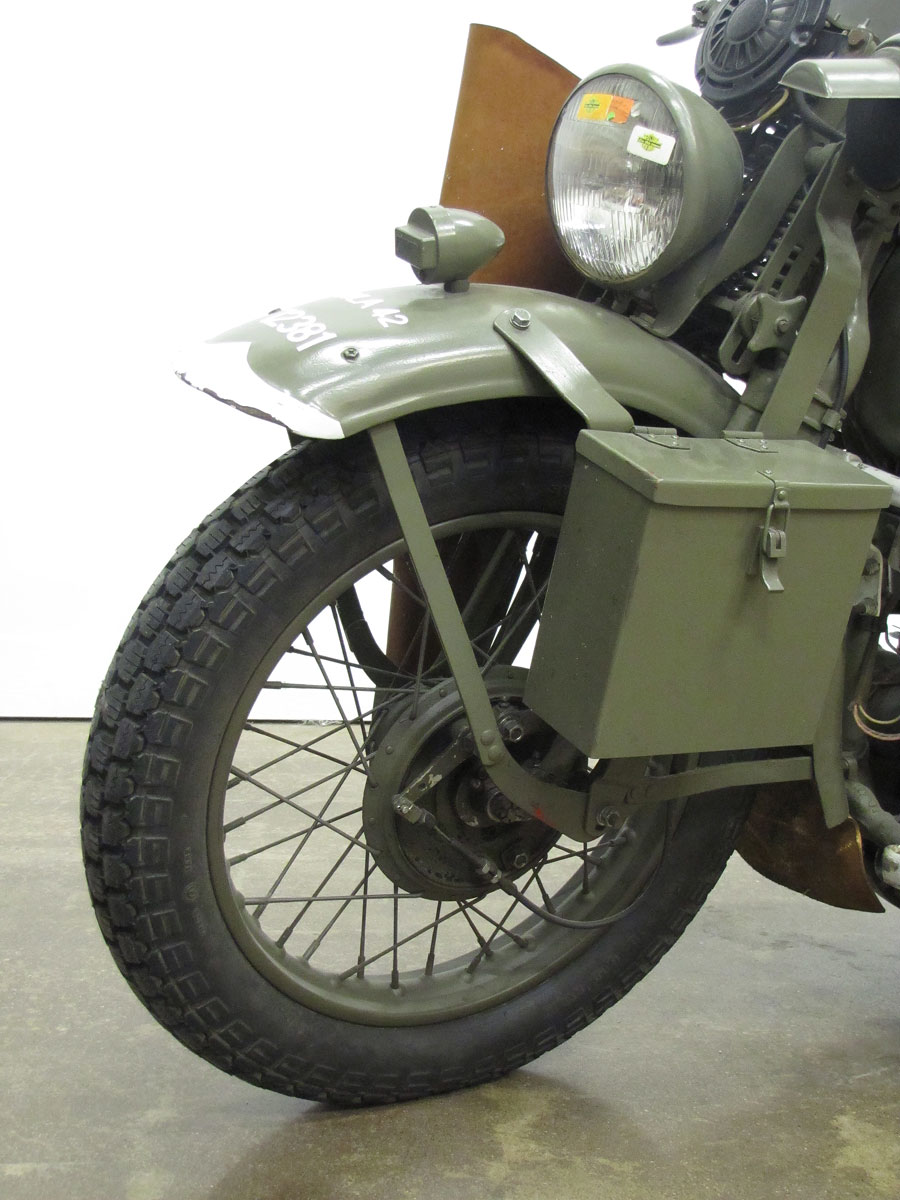
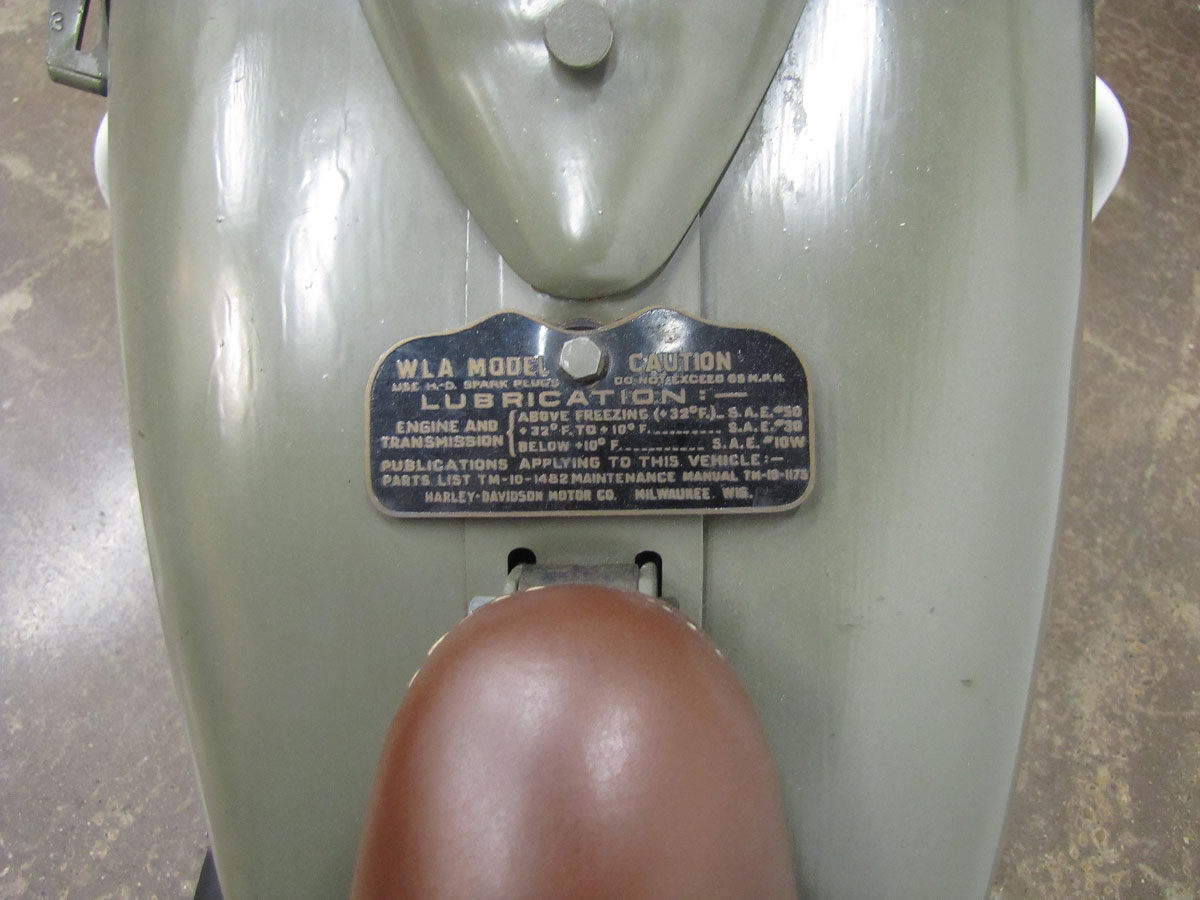
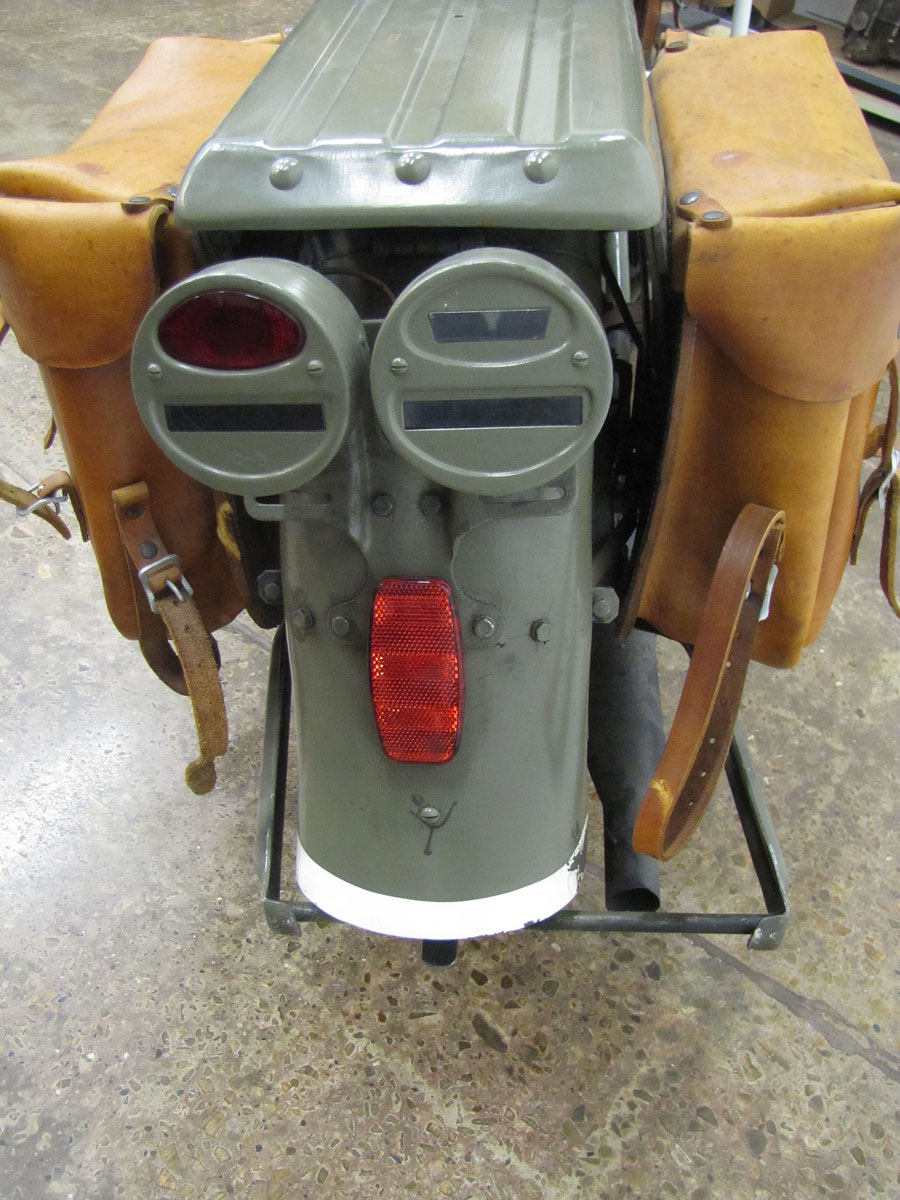
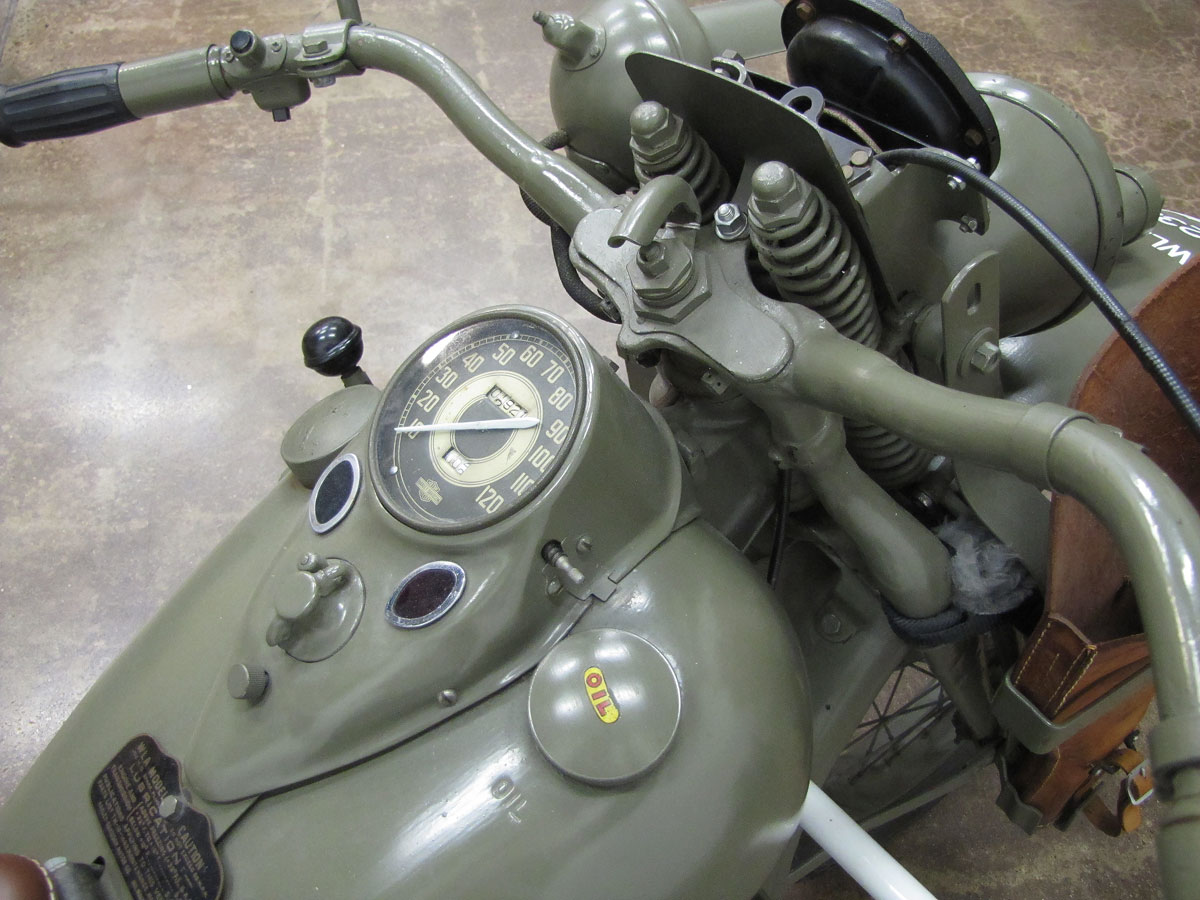
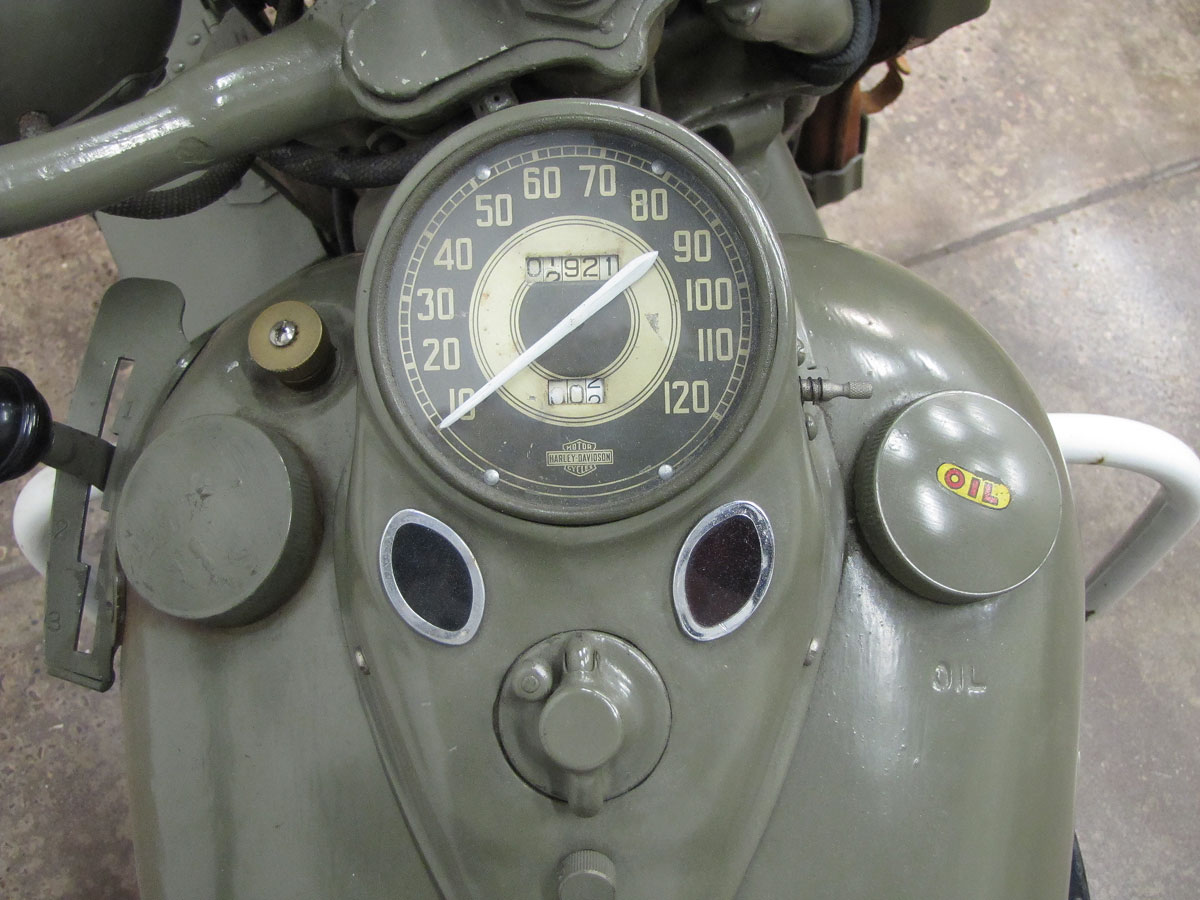
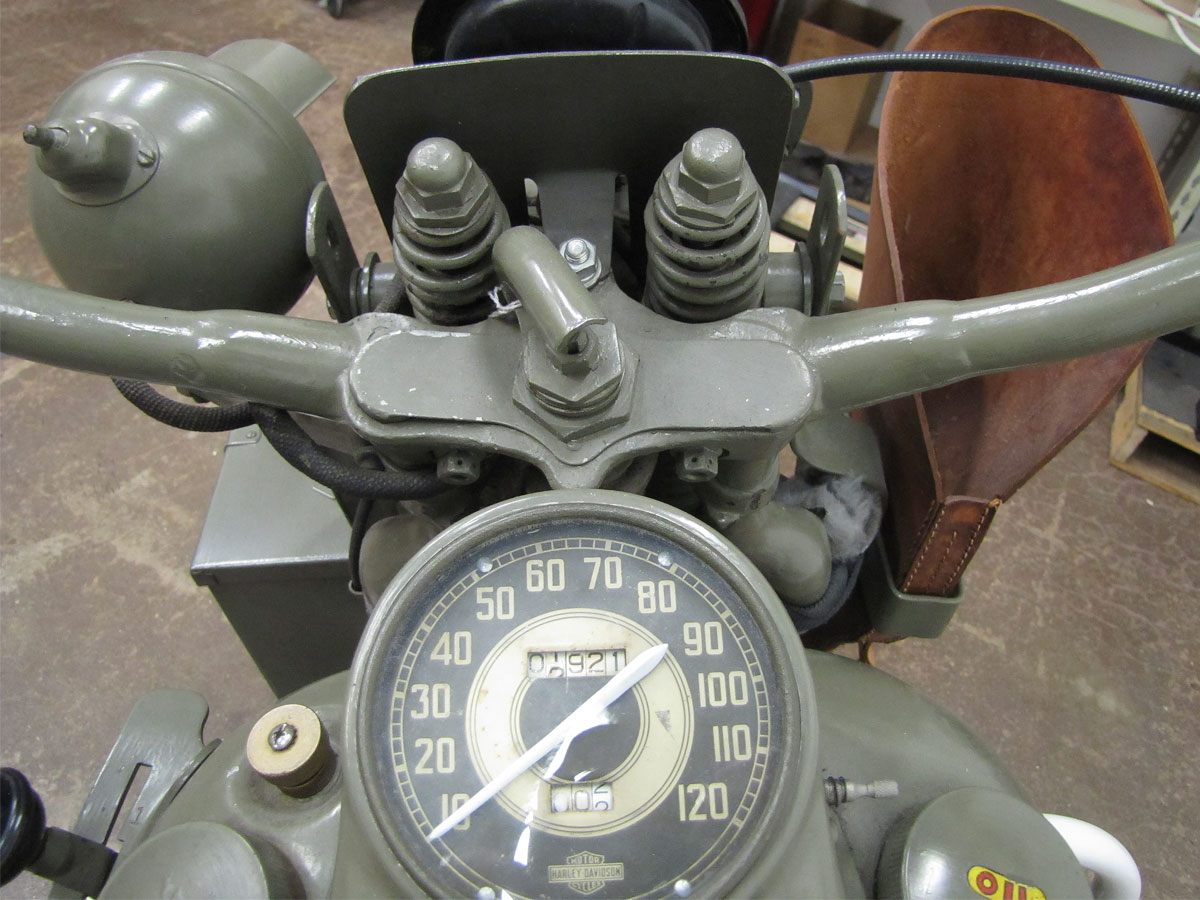
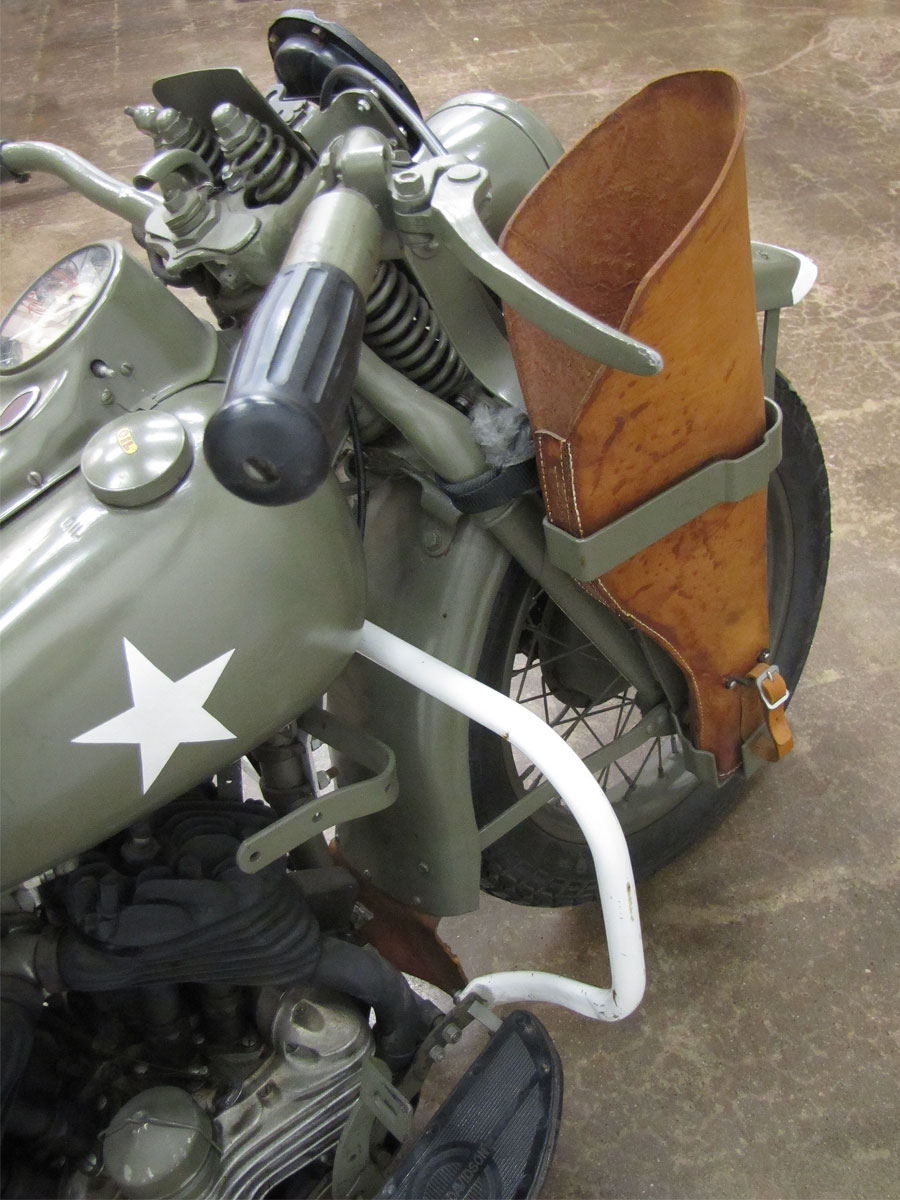
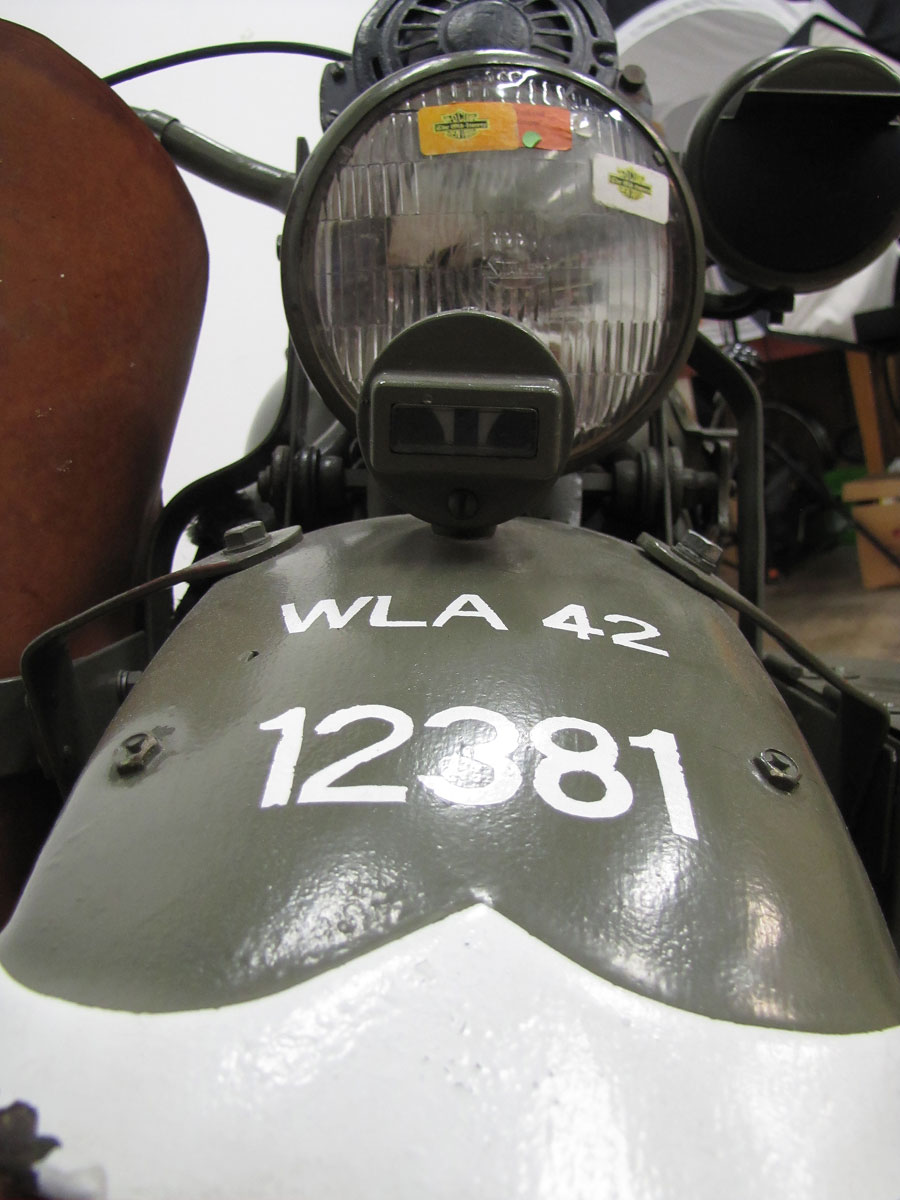
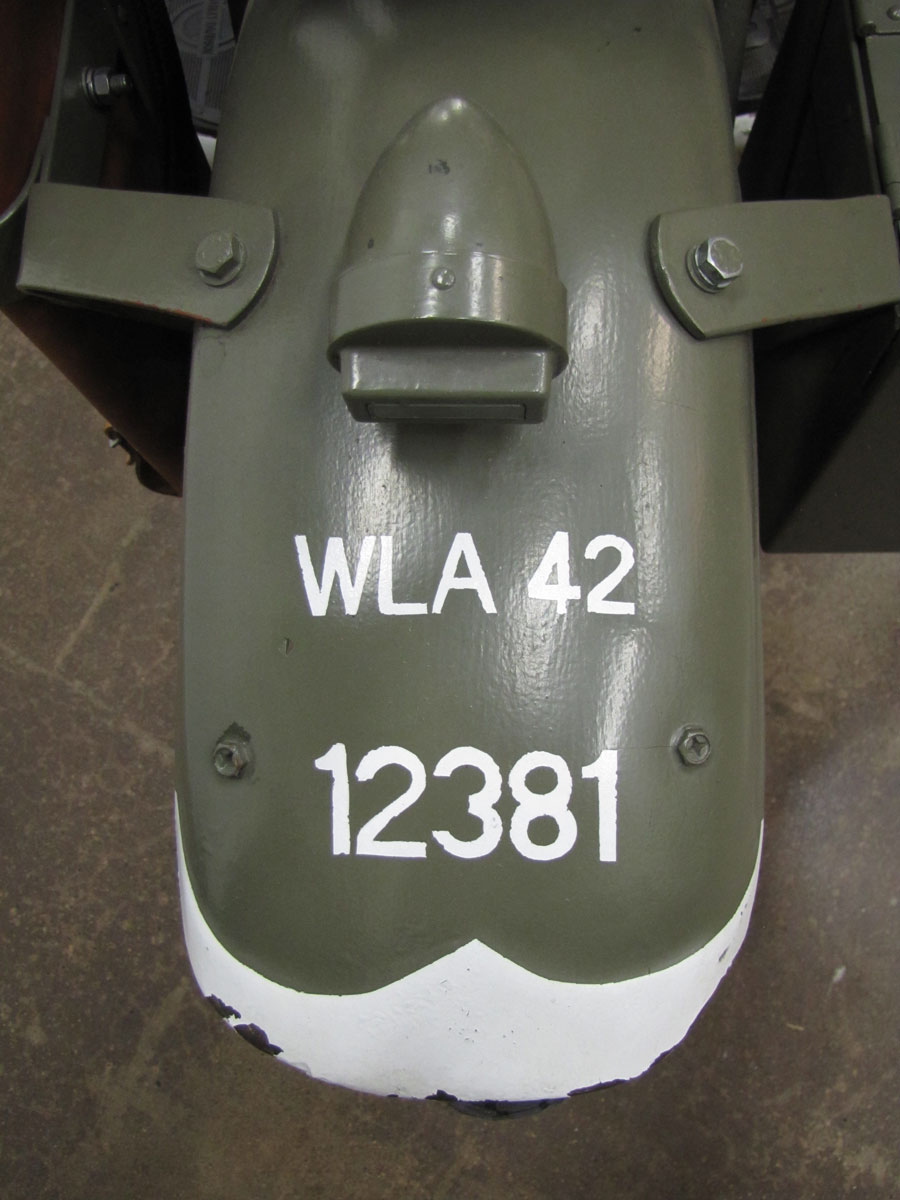
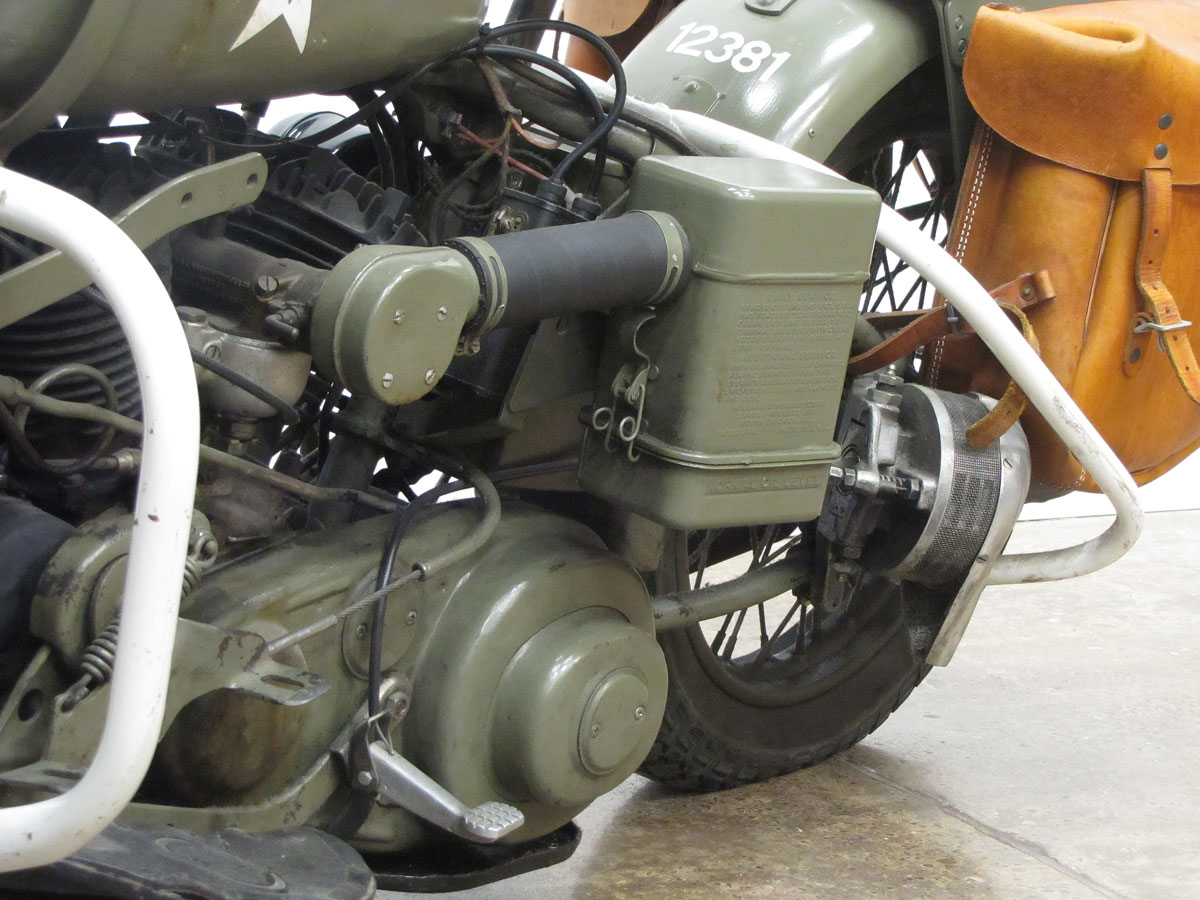
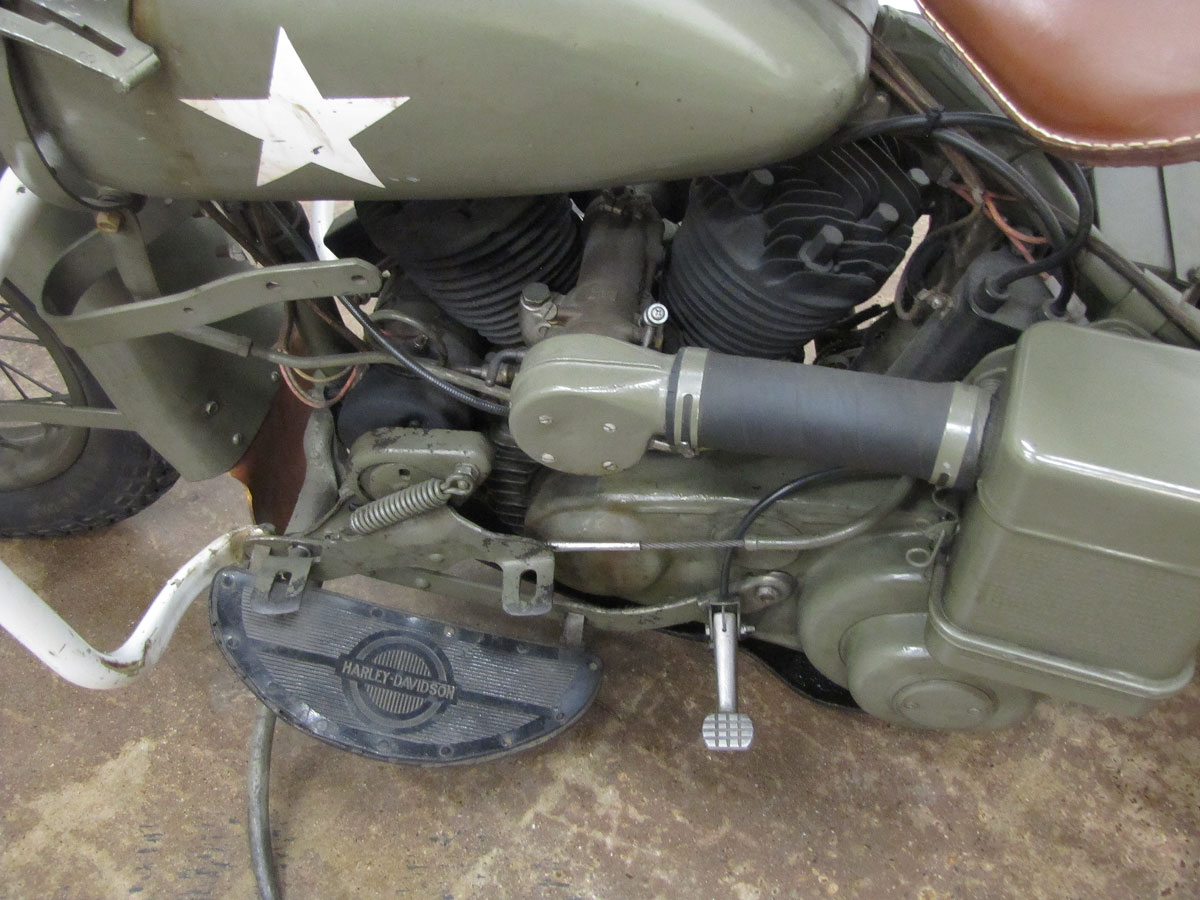

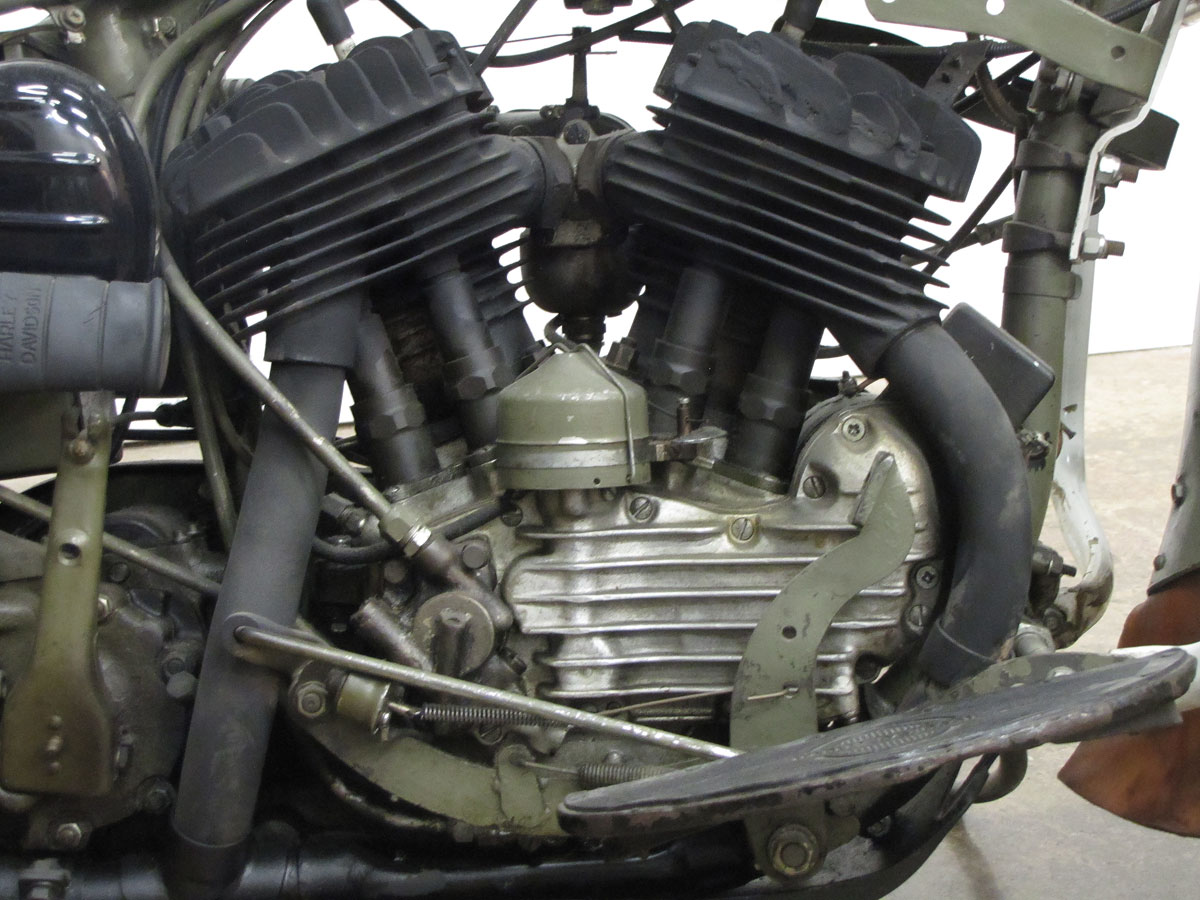
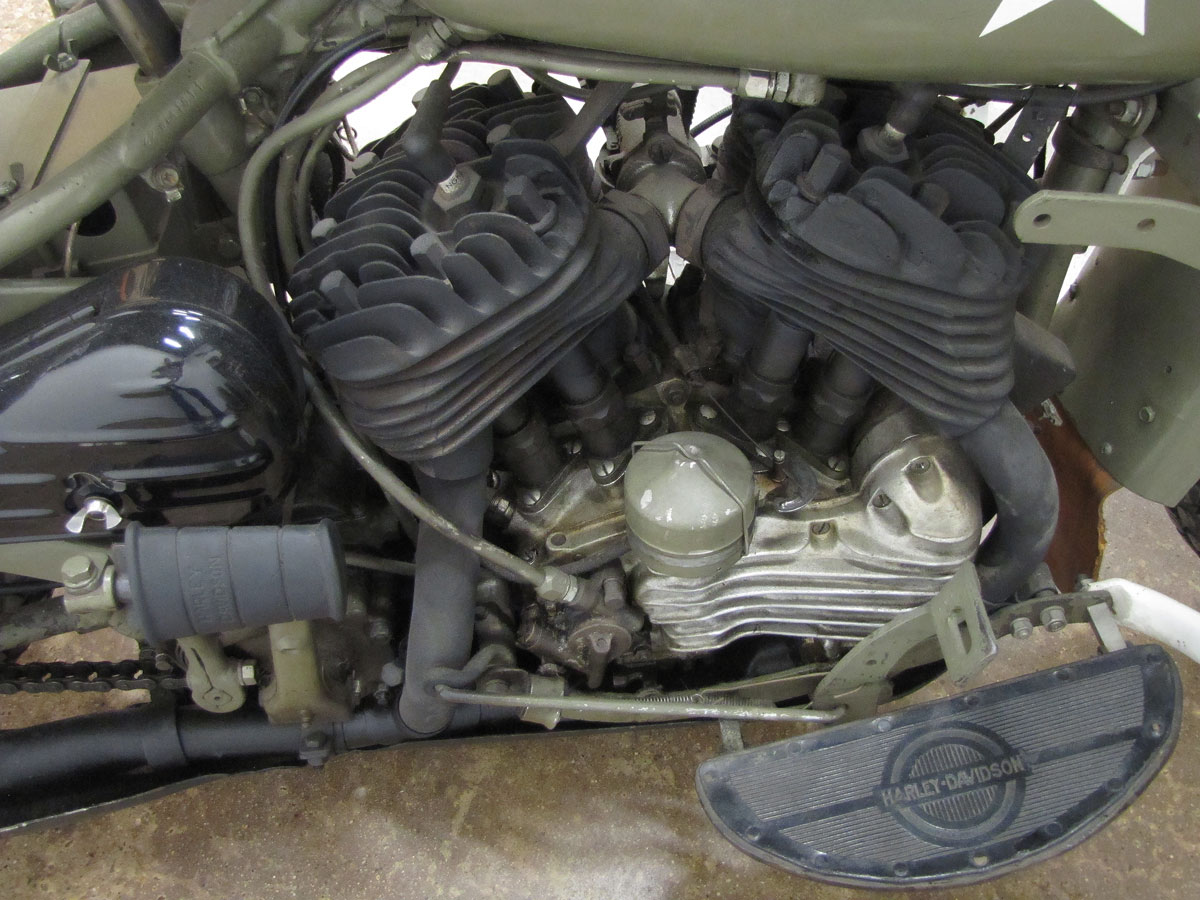
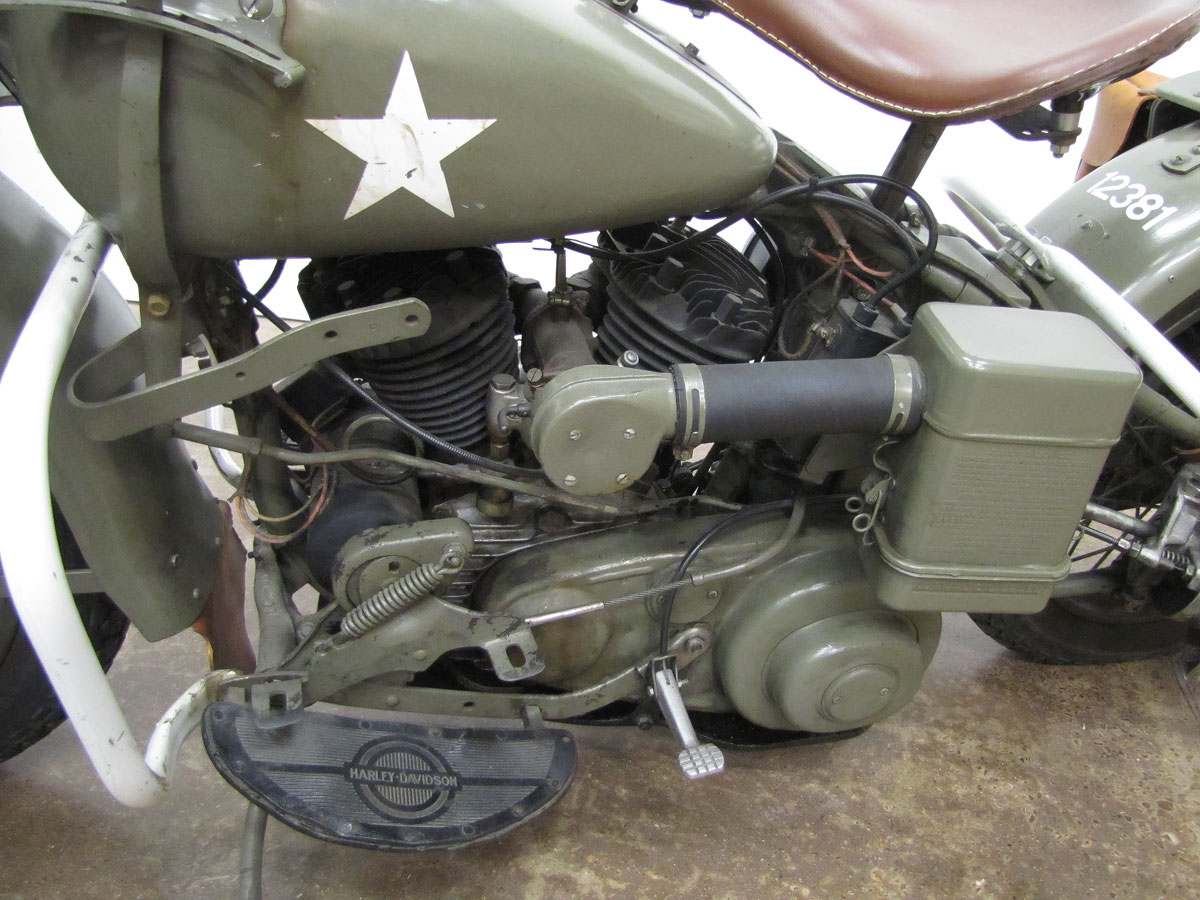
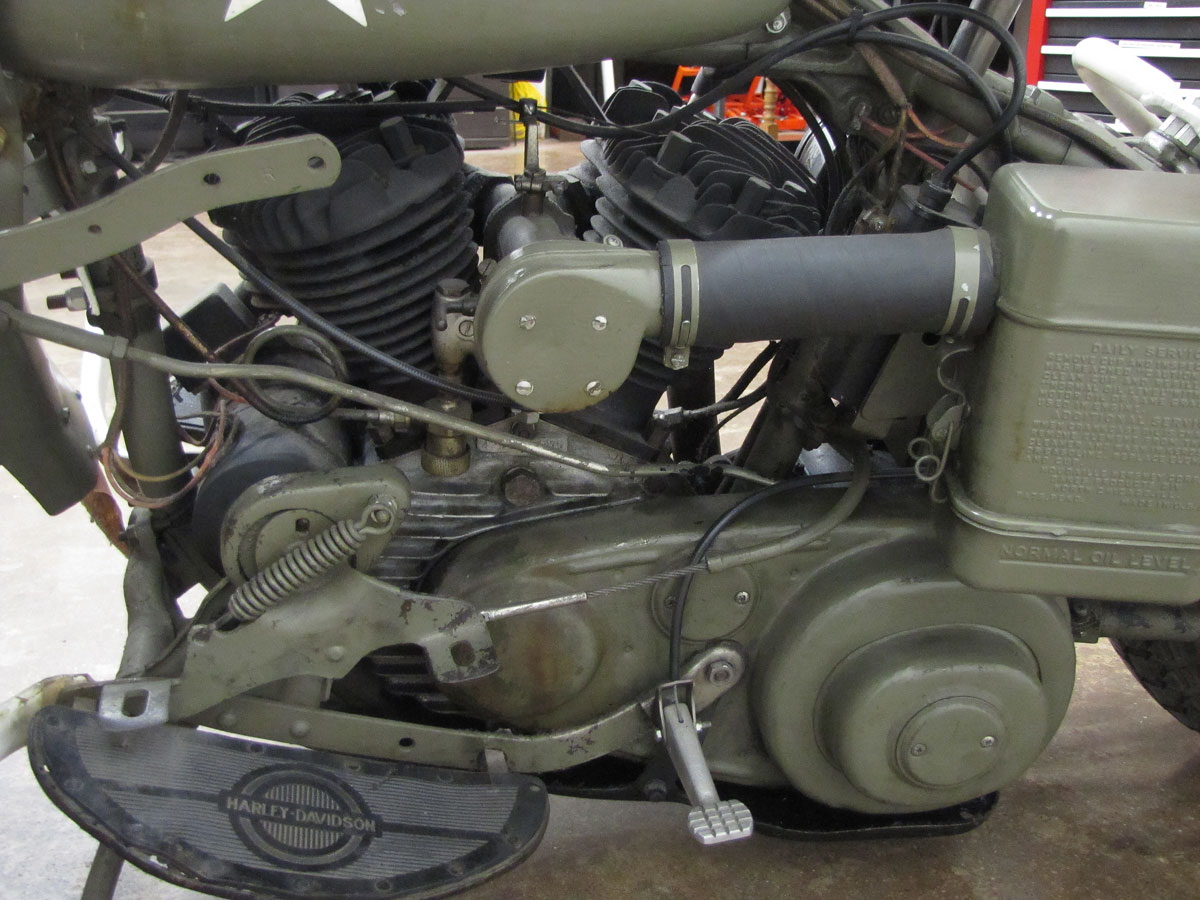
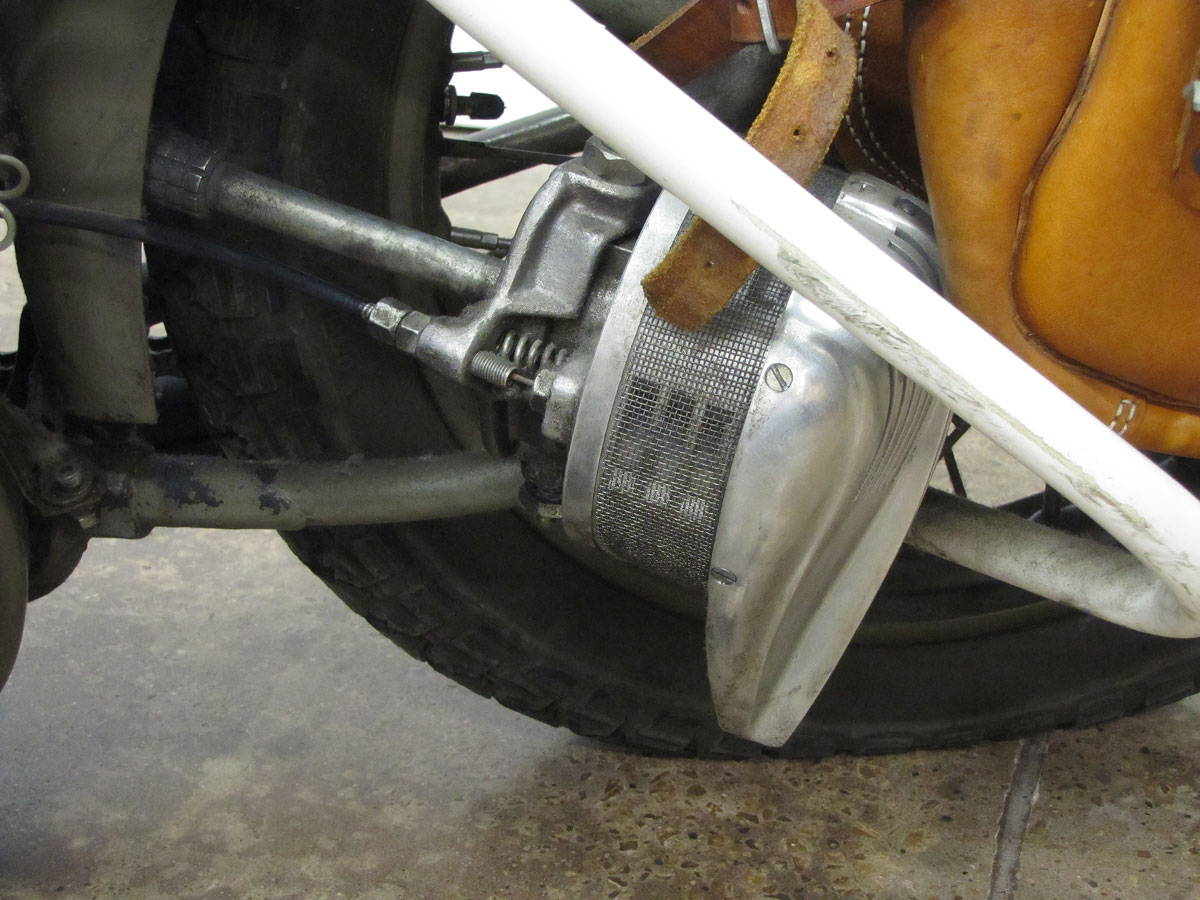
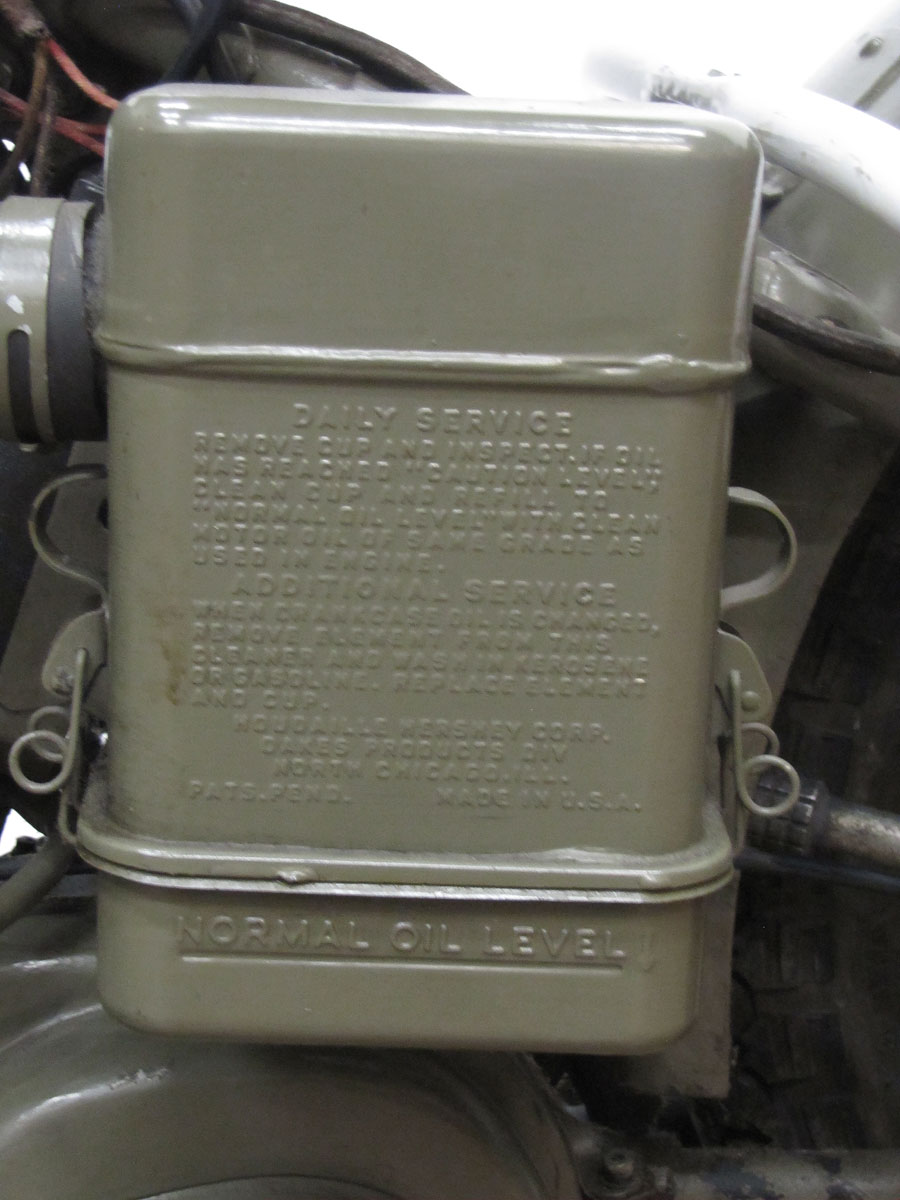
Very nice example! I sure would like to have that rear tire driven siren, they must be extremely rare. Thanks for posting this part of American motorcycle history.
Last year in going through old pictures to put in a shadow box for my husbands WWII Veteran grandfather’s after we moved him into the VA Home, we found a picture of him on a Liberator. So nice to see a picture of one in color to compare with the black and white one we have and know what it’s specifications were. It helps add to the historical memories we have gathered in his honor and memory. This Sergeant passed on October of this year. I will be putting this article in our memories for him.
Very nice story. I bet it was a blast to have ridden a WLA in war time Europe.
Bonjour,
Cette belle 42WLA est particulière. Elle possède un frein d’amortisseur à l’avant, sur La Fourche, comme on les rencontre sur les wl canada (WLC). Ses culasses sont en fonte acier comme on les rencontrait sur les modèles jusqu’en 1941. La pédale de kick est un bloc en caoutchouc et non une pédale vélo ou un tube acier. Le levier de frein avant est positionné sur la droite et non sur la gauche du guidon comme la plupart des modèles. Enfin la selle ne porte pas les clous sur les côtés.
Très belle moto et très belle restoration. WLA will never die and Will be forever un our heart.
Hello can you tell me what the colour is called .thank you
They called it Olive Drab
It’s not all that drab it’s fairly a lively color.
Looking into buying a wla but curious on the vin WLA42-443672 it came from poland the 42 is after the letters wla instead of before why would that be thank you for any info
Daniel 42WLA443672 is a type IV.
See http://www.theliberator.be for more info
Hi I would like to know about the numbers put on gas tank is this number on the chassis I have no log book for my WLA but is in Australia and original, thanks james .
Any idea if CM Hall Lamp Co. Made black out tail lights for these bikes?
have a wla 1942 ww11 harley davidson can you tell me what type it is by the engine number which is wla 42 21577 thank you John
We think it is a 45
can you tell me harley davidson wal 42 21577 what type it is
That’s a type III made in spring to autumn 1942.
Sorry; type III was produced between May’42 and April ’43
The 42WLA didn’t have longer front forks; only the 1940 and 1941 model did.
Please see http://www.theliberator.be for more details
wla 1942 type 111 did they have a crank case relief pipe on this bike regard’s John
No John, it does not have a pipe. Thank you for your interest in this bike.
wla 1942 type 111 did they have a crank case relief pipe or not regard’s John
It could’ve been a retrofit John, as it originaliteit only came with the 1945 42WLA.
Always as a set with a gearbox-snorkel
Did some wla’s have flat front fenders and did some have blue stars on tank and blue letters on fender and amo box
Flat fenders were fitted from late 1943 on.
Blue lettering was normal after 1943, in the ETO many were repainted white for better visibility.
I have an original 42 WLA type111 it was an Australian delivery Can any tell me what the white tips on the front and back mudguards meant cheers Ron
White tips were for visibility, mainly used by MP
I stumbled onto your site while searching for records/ pictures of motorcycle testing out of Ft. Benning Spring or summer 1942. My father was a Lt. in charge of a platoon in the 29th Inf. Regiment and they were chosen to go over to Alabama and test motorcycles for a month. I guess these were WLA Harleys. Does anyone there know anything about testing at this time and where I might find out more about it? Could they be testing WLS III even after it had started production? Or was this a different model? Dad’s description of tearing up the machines and his men was pretty entertaining. Thanks
I think I have a 42 wla can you de code my engine no please ?
N771679p under lh case
4227335 rh side case
Thanks
Lefthand number doesn’t ring any bells.
RH number means case produced and mated in 42.
Numbers should be same
Is it possible to purchase an Assembly Kit for Hobby Purposes.
How much would this cost, at today’s inflated prices. I’m a Marine Vietnam
Veteran & always wanted to build my own authentic WW2 MotorCycle..
W.L. Williams
Winter Park, FL 32792
THIS IS A GREAT BIKE CAN SOME ONE TELL ME HOW MANY EARLY TYPE 111 WHERE MADE BY HARLEY DAVIDSON REGARD;S John Australia
Hi all, I had the awesome opportunity to bid on this great bike and had the great fortune to win it. I would love any historical information that anyone can help me with. I had the opportunity to meet Jill Parham and she wasn’t able to tell me much.
Thanks for any response.
Mark